Alfred Russel Wallace
description: British naturalist, explorer, geographer, anthropologist and biologist (1823-1913)
123 results
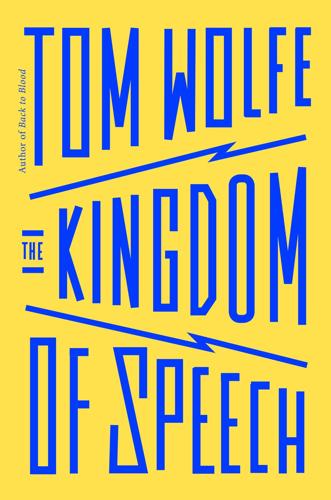
The Kingdom of Speech
by
Tom Wolfe
Published 30 Aug 2016
Lynch, ed., Selected Periodical Reviews, 1844–54, vol. 1 of “Vestiges” and the Debate Before Darwin (Bristol, UK: Thoemmes Press, 2000). 10 Ibid., 10. 11 Ben Waggoner, “Robert Chambers,” University of California Museum of Paleontology, http://www.ucmp.berkeley.edu/history/chambers.html. 12 Thomas Henry Huxley, review of Vestiges of the Natural History of Creation, 10th ed., The British and Foreign Medico-Chirurgical Review 13 (January–April 1854), 438. 13 Ibid., 427. 14 Alfred Russel Wallace, My Life: A Record of Events and Opinions (London: Chapman & Hall, 1905), 361–63. 15 Alfred Russel Wallace, “On the Tendency of Varieties to Depart Indefinitely from the Original Type,” Journal of the Proceedings of the Linnean Society: Zoology 3, no. 9 (August 20, 1858). Initially read at the July 1, 1858, meeting of the Linnean Society. 16 Darwin writes that Lyell had praised Wallace’s work in a letter to Wallace dated December 22, 1857, https://www.darwinproject.ac.uk/letter/DCP-LETT-2192.xml. 17 Mark Rothery, “The Wealth of the English Landed Gentry, 1870–1935,” Agricultural History Review 55, no. 2 (2007), 251–68. 18 A record of Charles Lyell I purchasing the estate was published in the December 9, 1887, edition of the Scottish Law Reporter, which included his and his successors’ professions. 19 See the Darwin family tree prepared by Charles Darwin in his book The Life of Erasmus Darwin, ed.
…
Kjaergaard, “Going the Whole Orang: Darwin, Wallace and the Natural History of Orangutans,” Studies in History and Philosophy of Biological and Biomedical Sciences 51 (June 2015), 53–63. 47 Alfred Russel Wallace, “The Limits of Natural Selection as Applied to Man,” Contributions to the Theory of Natural Selection, 2nd ed. (New York: Macmillan and Co., 1871), 370. 48 Ibid., 334–36. 49 Ibid., 344. 50 Ibid., 344–49. 51 Ibid., 334. 52 Ibid., 352. 53 Ibid., 359–60. 54 Shermer, In Darwin’s Shadow, 161. 55 Darwin to Alfred Russel Wallace, March 27, 1869. Available from the Darwin Correspondence Project database at https://www.darwinproject.ac.uk/entry-6684. 56 For more on how spiritism emerged in Darwin’s circle, see James Lander, Lincoln and Darwin: Shared Visions of Race, Science, and Religion (Carbondale: Southern Illinois University Press, 2010), 243–44.
…
He called Vestiges “a once attractive and still notorious work of fiction.”12 As for its anonymous author, he was one of those ignorant and superficial people who “indulge in science at second-hand and dispense totally with logic.”13 Everyone in the establishment was happy to point out that this anonymous know-it-all couldn’t begin to explain how, through what physical process, all this transmutation, this evolution, was supposed to have taken place. Nobody could figure it out—until now, a few moments ago, inside my brain! Mine! Alfred Russel Wallace’s! He is still in his wet, reeking bed, trying to endure the endless malarial paroxysms, when another kind of fever, an exhilarating fever, seizes him…a fervid desire to record his revelation and show the world—now! For two days and two nights14…during every halfway tranquil moment between the chills, the rattling ribs, the fevers, and the sweats…he writes and he writes writes writes a twenty-plus-page manuscript entitled “On the Tendency of Varieties to Depart Indefinitely from the Original Type.”15 He has done it!
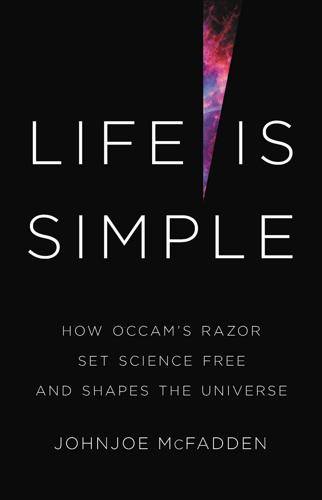
Life Is Simple: How Occam's Razor Set Science Free and Shapes the Universe
by
Johnjoe McFadden
Published 27 Sep 2021
Yet that process is not creative; it can only select variants that already exist within a population. On its own, it cannot make new variants nor create new species. FIGURE 30: Alfred Russel Wallace’s tombstone in Broadstone, Dorset. The next step in the unravelling of biology’s biggest secret was to discover a simple source of novel variation. 15 Of Peas, Primroses, Flies and Blind Rodents There is no more convincing proof of a theory than its power of absorbing and finding a place for new facts. Alfred Russel Wallace, 18671 Around the same time as George Campbell highlighted the absence of a way of generating variation in the theory of natural selection, Fleeming Jenkin, Regius professor of engineering at the University of Edinburgh, and inventor of the cable car, uncovered another, and potentially even more serious, problem.
…
R., ‘On the Law Which Has Regulated the Introduction of New Species (1855)’, Alfred Russel Wallace Classic Writings, Paper 2 (2009), http://digitalcommons.wku.edu/dlps_fac_arw/2 5. Ereshefsky, M., ‘Some Problems with the Linnaean Hierarchy’, Philosophy of Science, 61, 186–205 (1994). 6. Winchester, S., The Map That Changed the World: A Tale of Rocks, Ruin and Redemption (Penguin, 2002). 7. Ibid. 8. Goodhue, T. W., Fossil Hunter: The Life and Times of Mary Anning (1799–1847) (Academica Press, 2004). 9. Raby, P., Alfred Russel Wallace: A Life (Princeton University Press, 2002). 10. Bowler, P. J., Evolution: The History of an Idea: 25th Anniversary Edition, With a New Preface (University of California Press, 2009). 11.
…
A wonderful account of their traditions, myths and legends was however written by one of the last Western explorers to encounter and describe them, Baron Hermann von Walde-Waldegg.1 The expedition is described in Humboldt’s Personal Narrative,2 a book that later inspired both Charles Darwin and Alfred Russel Wallace. Their guides led the white men to a stream, which, in the dry season, had shrunk to a muddy pool ‘surrounded by fine trees, the clusia, the amyris, and the mimosa with fragrant flowers’. On arriving, the guides explained that the murky waters teemed with muscular eels known as tembladores (producers of trembling) for their painful shocks that could disable or even kill an adult.
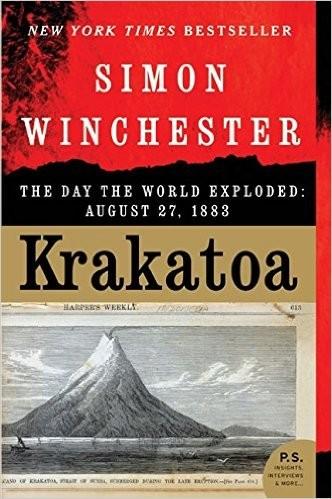
Krakatoa: The Day the World Exploded
by
Simon Winchester
Published 1 Jan 2003
In making an eastward journey from Sumatra to Irian, though he may not once pass out of sight of land, the traveller will have most decidedly left one world and entered another one utterly different. Alfred Russel Wallace. It would be forty more years before Sclater, working then with his son, would draw a map with the formal delineation, as the pair saw it, that separated the two avian worlds. But his work, which culminated in the reading of his 1857 paper outlining but not quite delineating their meeting-place, excited the interest of a much older, bolder and less well-educated Briton who was then living in the Indies. It was Alfred Russel Wallace who came swiftly to understand that it was not simply birds who inhabited two quite different worlds: plants and animals did also.
…
Auden CONTENTS List of Illustrations and Maps Maps Prelude 1 ‘An Island with a Pointed Mountain’ 2 The Crocodile in the Canal 3 Close Encounters on the Wallace Line 4 The Moments When the Mountain Moved 5 The Unchaining of the Gates of Hell 6 A League from the Last of the Sun 7 The Curious Case of the Terrified Elephant 8 The Paroxysm, the Flood and the Crack of Doom 9 Rebellion of a Ruined People 10 The Rising of the Son Epilogue: The Place the World Exploded Recommendations for (and in One Case, against) Further Reading and Viewing Acknowledgements, Erkenningen, Terima Kasih Illustration Acknowledgements Index LIST OF ILLUSTRATIONS AND MAPS Endpapers: Frederic Edwin Church's Sunset over the Ice on Chaumont Bay, Lake Ontario (p. xiv) Map of South-East Asia (p. xv) Map of South-East Asia, with the western islands of the immense archipelago of what is now Indonesia (p. xvi) Map of the islands of the Krakatoa group before the 1883 eruption (p. 11) Syzygium aromaticum, the clove (p. 11) Nutmeg and mace (p. 12) Piper nigrum, pepper (p. 14) The Tordesillas Line (p. 26) Jan Huyghen van Linschoten's 1595 map of the Far East (p. 33) Jan Pieterszoon Coen (p. 38) Vereenigde Oost-Indische Compagnie logo (p. 43) A milliner weaving topis and bonnets from alang-alang grass (p. 56) Alfred Russel Wallace (p. 61) Charles Darwin (p. 65) The Wallace Line (p. 71) Alfred Lothar Wegener (p. 74) Pangaea beginning its division into Laurasia and Gondwanaland (p. 81) Greenland (p. 85) A crystal of magnetite (p. 91) The process of convection inside the earth's mantle (p. 94) The magnetic ‘zebra stripes’ discovered on the seabed of the north-western Pacific in 1955 (p. 106) J.
…
It was Alfred Russel Wallace who came swiftly to understand that it was not simply birds who inhabited two quite different worlds: plants and animals did also. And, just like the birds, they all met – collided, even – somewhere among the maze of jungles of the myriad islands of the Dutch East Indies. Alfred Russel Wallace – who at the time was collecting, studying and living on the spice-rich island of Ternate in a grass hut – would take the observations of this young naturalist and, adding a vast amount of information from his own observations and collections, transform them into a theory and a grand cartographic creation that would survive to this very day. It has a name that remains its architect's most familiar memorial: the Wallace Line.
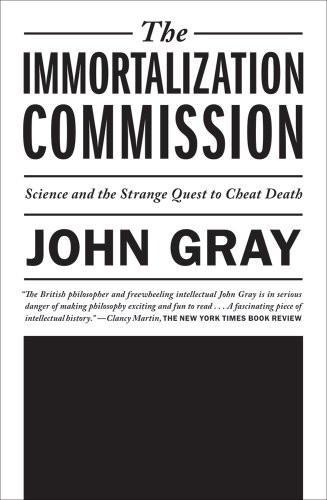
The Immortalization Commission: Science and the Strange Quest to Cheat Death
by
John Gray
Published 11 Apr 2011
p. 16 The characteristic of these cases …to meet the sceptics’ objections: Alice Johnson, ‘On the Automatic Writing of Mrs Holland’, Proceedings of the Society for Psychical Research, 21 (1908), 374–7. p. 17 Alfred Russel Wallace …my views as to the origin and nature of human faculty: Alfred Russel Wallace, Miracles and Modern Spiritualism, Three Essays, London: James Burn, 1875, vii–viii. Wallace’s statements about Spiritualism are cited in Michael Shermer, In Darwin’s Shadow: The Life and Science of Alfred Russel Wallace, New York: Oxford University Press, 2002, 199. p. 18 I shall be intensely curious to read the Quarterly: I hope you have not murdered too completely your own and my child: See ibid., 161.
…
JOHN GRAY The Immortalization Commission Science and the Strange Quest to Cheat Death ALLEN LANE an imprint of PENGUIN BOOKS Contents List of Illustrations Foreword: Two Attempts to Cheat Death 1 Cross-correspondences Darwin attends a seance – F. W. H. Myers and Henry Sidg-wick, founders of the Society for Psychical Research, arrange to send messages after they have died – Automatic writing and the cross-correspondences – Alfred Russel Wallace, co-discoverer of natural selection and convert to Spiritualism – Sidgwick on the search for an afterlife and a black hole in ethics – Darwin on the immortality of the soul – George Eliot discourses on Duty at twilight in Trinity College garden – Some varieties of the afterlife – Myers and posthumous evolution – Sidgwick’s message from beyond the grave: ‘I seek still’ – Two versions of the unconscious – The subliminal self and the power of impersonation – Henry Sidgwick and Madame Blavatsky – Sidgwick, Myers and gay sex – Myers and a secret love – Arthur Balfour on science, faith and doubt – Balfour’s long-dead love sends him a message – Palm Sunday – The cross-correspondences, the Story and the Plan – Post-mortem eugenics and a messianic child – A letter from Mars – The appearance and disappearance of ‘Clelia’, Myers’ unearthly muse – A subliminal romance comes to an end – Ouspensky on eternal recurrence – Flames over London 2 God-builders H.
…
Wells arrives in Russia and falls in love – Moura, Maxim Gorky’s confidante and Wells’ ‘Lover-Shadow’ – Robert Bruce Lockhart, Moura and the ‘Lockhart plot’ – Wells discovers Moura’s secret life – Moura’s laughter – The smell of honey – Wells, Darwin and Dr Moreau: ‘beasts that perish’ – ‘There is no “pattern of things to come”’ – Maxim Gorky, God-builder – Anatoly Lunacharsky, occultist and Soviet Commissar of Enlightenment – Vladimir Bekhterev, neurologist and parapsychologist, pays a visit to Stalin – Lamarck and Lysenko – The humanism of the White Sea Canal – Gorky on the extermination of rodents – Immortality and rocket science: Konstantin Tsiolkovsky – Stalin, an enormous flea – Gorky’s travelling suitcase – Gorky’s last word – Leonid Krasin, Soviet minister, money-launderer and cryogenics pioneer – Nikolai Federov, Orthodox mystic and techno-immortalist – The Immortalization Commission – Kazimir Malevich, Cubo-Futurist and inspirer of Lenin’s tomb – Victory over the Sun – Two Chekist supermen – Stalin’s coffee machine – The death machine – Eau de Cologne, ashes and freshly baked bread – Walter Duranty, disciple of Aleister Crowley and apologist for Stalin – Method acting and the show trials – Moura’s bonfire 3 Sweet Mortality From automatic writing to cryonic suspension – Freezing and starving yourself to everlasting life – Global warming and the mortal Earth – Ray Kurzweil and the Singularity – Artificial intelligence and virtual evolution – Immortalism, a programme for human extinction – Science as a machine for generating insoluble problems – Natural laws or primordial chaos – Rain – The sweet scent of death in Casablanca – The fall of a leaf Acknowledgements Permissions Notes Illustrations 1. Henry Sidgwick (Getty) 2. F. W. H. Myers 3. Alfred Russel Wallace (Corbis) 4. Balfour with George V (Lady Kremer) 5. Mary Lyttelton 6. Winifred Coombe-Tennant with Henry (Lady Kremer) 7. Street scene in Petrograd (from Russia in the Shadows) 8. Robert Bruce Lockhart (Corbis) 9. Wells, Gorky and Moura Budberg (Special Collections Library, University of Illinois) 10.
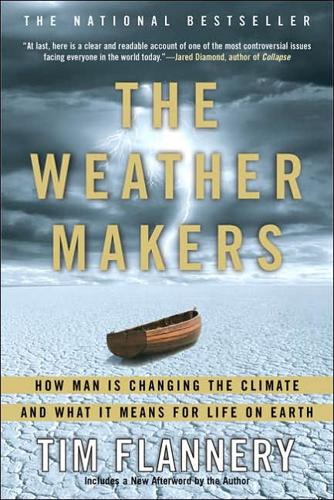
The Weather Makers: How Man Is Changing the Climate and What It Means for Life on Earth
by
Tim Flannery
Published 10 Jan 2001
I remember, as child, my great-aunt sitting with my mother at our kitchen table, a cup of tea in hand, saying meaningfully, ‘You could have cut the atmosphere with a knife.’ If we took the same linguistic approach to things maritime we would use the catch-all word ‘water’ to replace ‘sea’ and ‘ocean’, leaving us with no way to indicate whether we meant a glassful or a half a planet’s worth of hydrogen oxide, as H2O is properly known. It was Alfred Russel Wallace, co-founder with Charles Darwin of the theory of evolution by natural selection, who came up with the phrase ‘The Great Aerial Ocean’ to describe the atmosphere. It’s a far better name, because it conjures in the mind’s eye the currents, eddies and layers that create the weather far above our heads, and which is all that stands between us and the vastness of space.
…
TWO THE GREAT AERIAL OCEAN The great aerial ocean which surrounds us, has the wonderful property of allowing the heat-rays from the sun to pass through it without its being warmed by them; but when the earth is heated the air gets warmed by contact with it, and also to a considerable extent by the heat radiated from the warm earth because, although pure, dry air allows such dark heat rays to pass freely, yet the aqueous vapour and carbonic acid [CO2] in the air intercept and absorb them. ALFRED RUSSEL WALLACE, Man’s Place in the Universe, 1903 If we are to understand climate change we need to come to grips with three important yet widely misunderstood terms. The terms are greenhouse gases, global warming and climate change. Greenhouse gases are a class of gases which can trap heat near Earth’s surface.
…
Charles Darwin was eighteen years in the grave, Gregor Mendel’s pioneering studies into genetic inheritance were about to be rediscovered, and the horse was nearing the end of its tenure as humanity’s principal source of transport. Yet one relic of a heroic, earlier age remained. In his eighth decade of life Alfred Russel Wallace was still writing with as much energy and vision as ever. Indeed, when he passed away on the eve of the Great War, aged ninety, his obituary notice proclaimed that ‘he laid aside his pen only to die’.1 Of all the productions of his twilight years, none rivalled the monumental work that marked his eightieth year.

On the Future: Prospects for Humanity
by
Martin J. Rees
Published 14 Oct 2018
The encyclical also offered a clear papal endorsement of the Franciscan view that humans have a duty to care for all of what Catholics believe is ‘God’s creation’—that the natural world has value in its own right, quite apart from its benefits to humans. This attitude resonates with the sentiments beautifully expressed more than a century ago by Alfred Russel Wallace, co-conceptualiser of evolution by natural selection: I thought of the long ages of the past during which the successive generations of these things of beauty had run their course … with no intelligent eye to gaze upon their loveliness, to all appearances such a wanton waste of beauty.… This consideration must surely tell us that all living things were not made for man.… Their happiness and enjoyments, their loves and hates, their struggles for existence, their vigorous life and early death, would seem to be immediately related to their own well-being and perpetuation alone.12 The papal encyclical eased the path to agreement at the Paris climate conference in December 2015.
…
The reasoning was more often theological than scientific. Eminent nineteenth-century thinkers argued that life must pervade the cosmos, because otherwise such vast domains of space would seem such a waste of the Creator’s efforts. An amusing critique of such ideas is given in the impressive book Man’s Place in the Universe by Alfred Russel Wallace, the codeveloper of the theory of natural selection.2 Wallace is especially scathing about the physicist David Brewster (remembered by physicists for the ‘Brewster angle’ in optics), who conjectured on such grounds that even the Moon must be inhabited. Brewster argued in his book More Worlds Than One that had the Moon ‘been destined to be merely a lamp to our Earth, there was no occasion to variegate its surface with lofty mountains and extinct volcanoes and cover it with large patches of matter that reflect different quantities of light and give its surface the appearance of continents and seas.
…
Wilson’s The Creation: An Appeal to Save Life on Earth (New York: W. W. Norton, 2006). 11. The conference, on May 2–6, 2014, was titled ‘Sustainable Humanity, Sustainable Nature: Our Responsibility’, and was cosponsored by the Pontifical Academy of Sciences and the Pontifical Academy of Social Sciences. 12. The quote is from Alfred Russel Wallace, The Malay Archipelago (London: Harper, 1869). 13. The Skeptical Environmentalist was published by Cambridge University Press in 2001. The Copenhagen Consensus, founded in 2002, is under the auspices of the Environmental Assessment Institute in Copenhagen. 14. The scientists involved in this project include C.
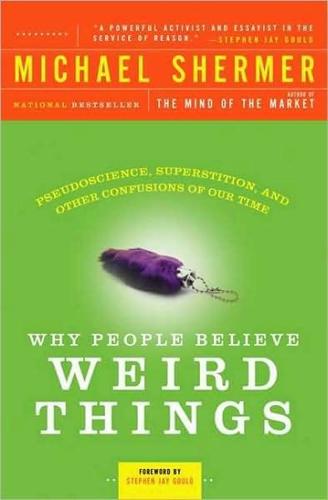
Why People Believe Weird Things: Pseudoscience, Superstition, and Other Confusions of Our Time
by
Michael Shermer
Published 1 Jan 1997
Through the scientific method, we aim for objectivity: basing conclusions on external validation. And we avoid mysticism: basing conclusions on personal insights that elude external validation. There is nothing wrong with personal insight as a starting point. Many great scientists have attributed their important ideas to insight, intuition, and other mental leaps hard to pin down. Alfred Russel Wallace said that the idea of natural selection "suddenly flashed upon" him during an attack of malaria. But intuitive ideas and mystical insights do not become objective until they are externally validated. As psychologist Richard Hardison explained, Mystical "truths," by their nature, must be solely personal, and they can have no possible external validation.
…
In the case of Lavoisier, he not only believed in oxygen: oxygen existed" (pp. 125-126). Similarly, for Georges Buffon and Charles Lyell, varieties in a population were merely degenerates from the originally created kind; nature eliminated them to preserve the essence of the species. For Charles Darwin and Alfred Russel Wallace, varieties were the key to evolutionary change. Each view depends on a different ontological paradigm: Buffon and Lyell could not see varieties as evolutionary engines because evolution did not exist for them; Darwin and Wallace did not view varieties as degenerative because degeneration is irrelevant to evolution.
…
The more subjective the endeavor, the more individual it becomes, and therefore difficult if not impossible for someone else to produce. The more objective the pursuit, the more likely it is that someone else will duplicate the achievement. Science actually depends upon duplication for verification. Darwin's theory of natural selection would have occurred to another scientist—and, in fact, did occur to Alfred Russel Wallace simultaneously—because the scientific process is empirically verifiable. In the Industrial West, the emphasis on scientific and technological progress has affected Western cultures deeply—so much so that we now define a culture as progressive if it encourages the development of science and technology.
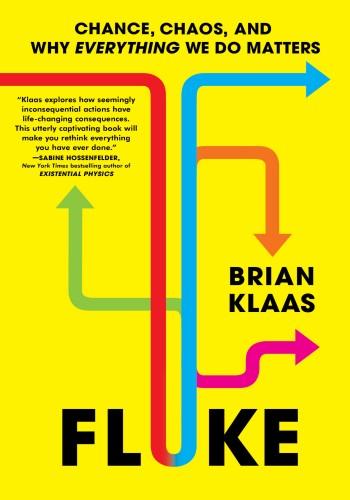
Fluke: Chance, Chaos, and Why Everything We Do Matters
by
Brian Klaas
Published 23 Jan 2024
Wallace was an outsider: For excellent accounts of Wallace’s life, see James T. Costa, Radical by Nature: The Revolutionary Life of Alfred Russell Wallace (Princeton, NJ: Princeton University Press, 2023); and Peter Raby, Alfred Russell Wallace: A Life (London: Pimlico, 2002). swear by phrenology: For a profile of Wallace’s views, see Jonathan Rosen, “The Missing Link,” New Yorker, 4 February 2007. “brought out of the night air”: This quote comes from a letter from Alfred Russell Wallace to the Spiritual Magazine, which was published on 1 February 1867. The letter is available at https://people.wku.edu/charles.smith/wallace/S126.htm.
…
Wouldn’t someone else have come up with the same theory if he hadn’t, the same way that Gottfried Wilhelm Leibniz invented calculus around the same time as Isaac Newton? The objection is apt because someone else did propose a theory of evolution at roughly the same time as Charles Darwin, an English naturalist named Alfred Russel Wallace. The tale of these two men is frequently used to support an anti-Kuhnian, dispassionate, convergent view of science. Great discoveries are “in the air” when they’re made, part of a scientific trend. It wouldn’t particularly affect the trajectory of progress whether it was Darwin or Wallace who pioneered evolutionary theory.
…
But he delayed publishing his core insights for various reasons, ranging from personal illness to the potential social stigma for publishing a set of ideas so at odds with prevailing religious dogma. He stuck his early drafts in a drawer and went about his life without any urgency to publish them in a book. Then, in 1858, Darwin received a parcel that would change his life—and science—forever. It was a letter from the British naturalist Alfred Russel Wallace. As Darwin read what Wallace had written, Darwin was shocked to see a remarkably similar idea to his own concept of natural selection. “I never saw a more striking coincidence,” Darwin later remembered. Fearing that Wallace would get the credit for an idea that Darwin had come up with decades earlier, Darwin quickly produced the manuscript for On the Origin of Species and sent it to a publisher, John Murray, for review.
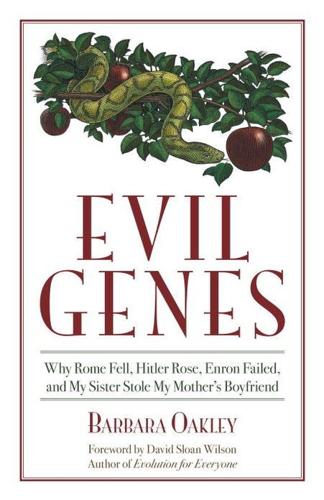
Evil Genes: Why Rome Fell, Hitler Rose, Enron Failed, and My Sister Stole My Mother's Boyfriend
by
Barbara Oakley Phd
Published 20 Oct 2008
James Shreeve, The Genome War (New York: Alfred A. Knopf, 2004), pp. 27–38. 9. Arnold C. Brackman, A Delicate Arrangement: The Strange Case of Charles Darwin and Alfred Russel Wallace (New York: Times Books, 1980), p. 124. 10. Ross A. Slotten, The Heretic in Darwin's Court: The Life of Alfred Russel Wallace (New York: Columbia University Press, 2004), p. 159. 11. Brackman, Delicate Arrangement, p. 34. 12. Michael Shermer, In Darwin's Shadow: The Life and Science of Alfred Russel Wallace: A Biographical Study on the Psychology of History (New York: Oxford University Press, 2002). 13. James D. Watson, The Double Helix: A Personal Account of the Discovery of the Structure of DNA (New York: Penguin, 1970).
…
If Mendel had had the ego, self-esteem, or sheer, untrammeled narcissisma. to repeatedly trumpet his findings to the world, researchers would have been clued in to the central ideas underpinning genetics some thirty-five years earlier than they did. Mendel makes an interesting contrast with Charles Darwin and Alfred Russel Wallace, co-discoverers of evolution and variation with natural selection, who superficially appeared to share Mendel's lack of self-esteem. Darwin was an inhibited man with a reputation for integrity and a pride so well veiled that Wallace admired him from afar for being “so free…[of] egotism.”9 After a five-year, round-the-world voyage on the Beagle, Darwin returned to publish his findings related to zoology and geology.
…
Secretly, however, he also embarked on a never-finished five-hundred-thousand-word masterwork (the equivalent of two thousand double-spaced manuscript pages) that was to summarize the theory of and evidence for evolution. Much of the twenty years Darwin spent tucked away at his country estate preoccupied with puzzling out the secrets of evolution, Alfred Russel Wallace spent puzzling at the same problem in his adventures studying and collecting the flora and fauna of both the Amazon River basin and the Malay Archipelago. Like Darwin, he published his findings. Unlike Darwin, however, Wallace also began publishing articles related to the origin of species—poaching on evolutionary turf Darwin had thought was his alone.
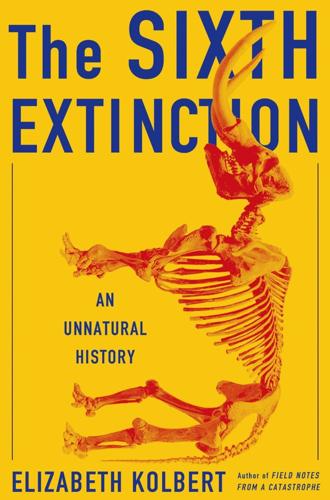
The Sixth Extinction: An Unnatural History
by
Elizabeth Kolbert
Published 11 Feb 2014
* * * AS it happens, Darwin’s first paper on natural selection appeared in print just as Newton was returning home from Iceland. The paper, in the Journal of the Proceedings of the Linnean Society, had—with Lyell’s help—been published in a rush soon after Darwin had learned that a young naturalist named Alfred Russel Wallace was onto a similar idea. (A paper by Wallace appeared in the same issue of the Journal.) Newton read Darwin’s essay very soon after it came out, staying up late into the night to finish it, and he immediately became a convert. “It came to me like the direct revelation of a higher power,” he later recalled, “and I awoke next morning with the consciousness that there was an end of all the mystery in the simple phrase, ‘Natural Selection.’”
…
So was much of New England, meaning that every species of tree now found in Nova Scotia or Ontario or Vermont or New Hampshire is a migrant that’s arrived (or returned) just in the last several thousand years. The diversity as a function of time theory was first advanced by Darwin’s rival, or, if you prefer, codiscoverer, Alfred Russel Wallace, who observed that in the tropics “evolution has had a fair chance,” while in glaciated regions “it has had countless difficulties thrown in its way.” * * * THE following morning, we all crawled out of our sleeping bags early to see the sunrise. Overnight, clouds had rolled in from the Amazon basin, and we watched them from above as they turned first pink and then flaming orange.
…
When later naturalists rejected Cuvier’s catastrophism, they were left with a puzzle. Why had so many large beasts disappeared in such a relatively short amount of time? “We live in a zoologically impoverished world, from which all the hugest, and fiercest, and strangest forms have recently disappeared,” Alfred Russel Wallace observed. “And it is, no doubt, a much better world for us now they have gone. Yet it is surely a marvellous fact, and one that has hardly been sufficiently dwelt upon, this sudden dying out of so many large mammalia, not in one place only but over half the land surface of the globe.” * * * AS it happens, the Cincinnati Zoo is only about a forty-minute drive from Big Bone Lick, where Longueuil picked up the mastodon teeth that would inspire Cuvier’s theory of extinction.
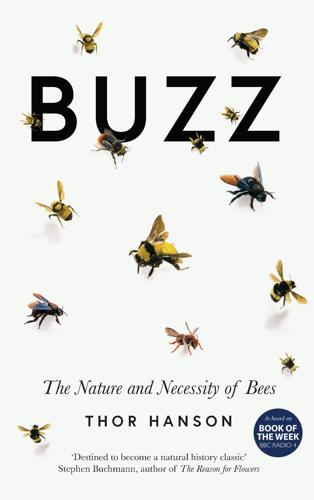
Buzz: The Nature and Necessity of Bees
by
Thor Hanson
Published 1 Jul 2018
I’ve always felt a pang for the organisms my studies have led me to collect, even plants. It’s a sentiment that would have limited my career prospects in earlier days. When Charles Darwin sailed on the Beagle, he shipped home everything from prickly pear cacti to a pickled hummingbird, more than 8,000 specimens in all. Alfred Russel Wallace was even more prolific in Malaysia, Indonesia, and New Guinea, where his total “specimens of natural history” topped 125,000. Modern biologists aim for a lighter touch, sampling with methods earnestly described as “noninvasive,” or, even better, “sub-lethal.” But for anything tricky to identify, taking a voucher back to the lab remained an essential step.
…
Among the many gems was #1,934, collected in the Falkland Islands—“Teeth of rat out of stomach of a Hawk shot in the country.” Porter (2010) reviewed Darwin’s plant collections and found 2,700 specimens on 1,476 herbarium sheets at Cambridge, where the bulk of his botanical efforts are stored. Note that these totals do not include Darwin’s geological or paleontological specimens, which were also extensive. 6 Alfred Russel Wallace was even more prolific: Wallace’s hefty inventory included mammals, reptiles, birds, shells, and insects, as reported in his wonderful account titled The Malay Archipelago (Wallace 1869, xi). Remarkably, beetles accounted for 83,200 of his specimens, over two-thirds of the total. 7 lattice of translucent chitin: For a full explanation of this phenomenon, which is also found in some beetles and butterfly scales, see Berthier 2007. 8 once blinded a shepherd: See Graves 1960, 66. 9 three basic parts: head, thorax, and abdomen: The unusual positioning and development of the waist in bees, wasps, and ants technically put the first segment of the abdomen onto the thorax.
…
They are highly efficient pollinators, and several species can be purchased commercially for the pollination of fruit trees, alfalfa, and almonds. This family includes the largest bee in the world, Wallace’s giant bee (Megachile pluto), whose wingspan exceeds 2.5 inches (63.5 millimeters). Naturalist Alfred Russel Wallace discovered a single specimen in 1859, and few people have seen it since—the bee remains known from only three islands in Indonesia, where it inhabits the nests of a tree-dwelling termite. Members of this family are mostly solitary, though a few (including Wallace’s bee) live communally. Wallace’s bee (bottom right) and two leafcutters are pictured here.
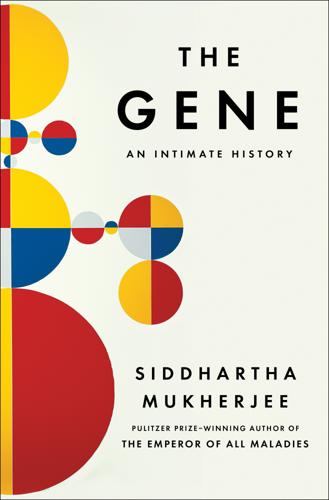
The Gene: An Intimate History
by
Siddhartha Mukherjee
Published 16 May 2016
Like Darwin, Wallace had also embarked: Ibid., 12. Wallace moved from the Amazon basin: Ibid., ix. “The answer was clearly”: Benjamin Orange Flowers, “Alfred Russel Wallace,” Arena 36 (1906): 209. In June 1858, Wallace sent Darwin a tentative draft: Alfred Russel Wallace, Alfred Russel Wallace: Letters and Reminiscences, ed. James Marchant (New York: Arno Press, 1975), 118. On July 1, 1858, Darwin’s and Wallace’s papers were read: Charles Darwin, The Correspondence of Charles Darwin, vol. 13, ed. Frederick Burkhardt, Duncan M. Porter, and Sheila Ann Dean, et al. (Cambridge: Cambridge University Press, 2003), 468.
…
In 1844, he distilled the crucial parts: Charles Darwin, The Foundations of the Origin of Species, Two Essays Written in 1842 and 1844, ed. Francis Darwin (Cambridge: Cambridge University Press, 1909), “Essay of 1844.” Alfred Russel Wallace, published a paper: Alfred R. Wallace, “XVIII.—On the law which has regulated the introduction of new species,” Annals and Magazine of Natural History 16, no. 93 (1855): 184–96. Wallace had been born to a middle-class family: Charles H. Smith and George Beccaloni, Natural Selection and Beyond: The Intellectual Legacy of Alfred Russel Wallace (Oxford: Oxford University Press, 2008), 10. but on the hard-back benches of the free library: Ibid., 69. Like Darwin, Wallace had also embarked: Ibid., 12.
…
Men were hauled off to the battlefront and Europe plunged into a depression. It was as if Malthus and the struggle for survival had come alive in the real world. In the summer of 1855, more than a decade and a half after Darwin had first read Malthus’s essay and crystallized his ideas about speciation, a young naturalist, Alfred Russel Wallace, published a paper in the Annals and Magazine of Natural History that skirted dangerously close to Darwin’s yet-unpublished theory. Wallace and Darwin had emerged from vastly different social and ideological backgrounds. Unlike Darwin—landed cleric, gentleman biologist, and soon to be England’s most lauded natural historian—Wallace had been born to a middle-class family in Monmouthshire.
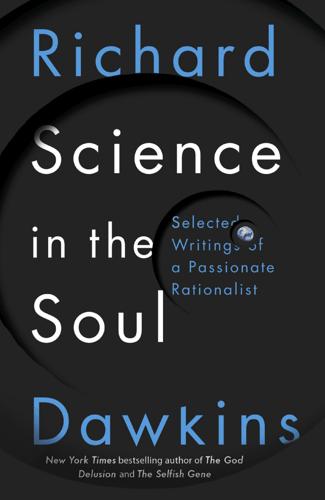
Science in the Soul: Selected Writings of a Passionate Rationalist
by
Richard Dawkins
Published 15 Mar 2017
Darwin might justifiably be saddened, given our huge advantages over himself and his contemporaries, at how little we seem to have done to deploy our superior knowledge in our culture. Late twentieth-century civilization, Darwin would be dismayed to note, though imbued with and surrounded by the products and advantages of science, has yet to draw science into its sensibility. Is there even a sense in which we have slipped backwards since Darwin’s co-discoverer, Alfred Russel Wallace, wrote The Wonderful Century, a glowing scientific retrospective on his era? Perhaps there was undue complacency in late nineteenth-century science, about how much had been achieved and how little more advancement could be expected. William Thomson, the first Lord Kelvin, President of the Royal Society, pioneered the transatlantic cable – symbol of Victorian progress – and also the second law of thermodynamics – C.
…
.* The successive pieces illustrate how the theory was launched in an unlikely double-act of scientific gentlemanliness; how it works, and how far its power and validity might extend; how it is taken forward, and how it is misunderstood. Throughout runs the constant drive to refine, clarify and extend the application of this most powerful of scientific ideas. The first piece, a speech delivered in the Linnean Society to commemorate the 1858 reading there of Charles Darwin’s and Alfred Russel Wallace’s papers that broke the news of their world-shaking discoveries, gives specific and poignant form to the values of science – and scientists – enumerated and defended in section I. After relating the joint work of the two great Victorian scientists, it ends with a bold supposition that Darwinian natural selection is the only adequate explanation not only for how life has evolved but for how it could evolve.
…
Unlike works of art, scientific truths do not change their nature in response to the individual human beings who discover them. This is both a glory, and a limitation, of science. If Shakespeare had never lived, nobody else would have written Macbeth. If Darwin had never lived, somebody else would have discovered natural selection. In fact, somebody did – Alfred Russel Wallace. And that is why we are here today. On 1 July 1858 was launched upon the world the theory of evolution by natural selection, certainly one of the most powerful and far-reaching ideas ever to occur to a human mind. It occurred not to one mind, but two. Here I want to note that both Darwin and Wallace distinguished themselves not just for the discovery which they independently made, but for the generosity and humanity with which they resolved their priority in doing so.
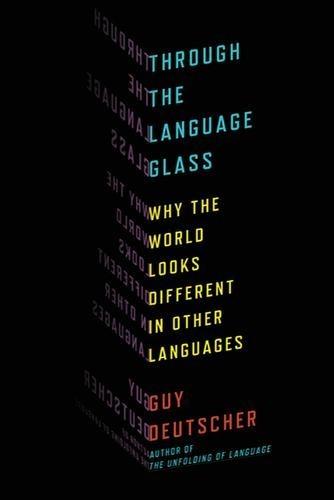
Through the Language Glass: Why the World Looks Different in Other Languages
by
Guy Deutscher
Published 29 Aug 2010
And while these effects may be less wild than those flaunted in the past, we shall see that some of them are no less striking for all that. But first—off to the fighting over the rainbow. PART I The LANGUAGE MIRROR 1 Naming the Rainbow London, 1858. On the first of July, the Linnean Society, in its magnificent new quarters at Burlington House in Piccadilly, will hear two papers by Charles Darwin and Alfred Russel Wallace announcing jointly a theory of evolution by natural selection. Before long, the flame will flare up and illuminate the intellectual firmament, leaving no corner of human reason untouched. But although the wildfire of Darwinism will catch up with us soon enough, we do not begin quite there.
…
Gladstone, now an ex–prime minister and at the height of his fame, was gratified to find a scientific authority so enthusiastically championing his findings of twenty years earlier and wrote a favorable review in the popular journal The Nineteenth Century, which ensured that the debate spilled over to other popular magazines and even the daily press. The claim that the color sense evolved only in the last millennia also received a considerable amount of support from eminent scientists, including some of the brightest luminaries in the evolutionary movement. Alfred Russel Wallace, the codiscoverer with Darwin of the principle of evolution by natural selection, wrote in 1877 that “if the capacity of distinguishing colours has increased in historic times, we may perhaps look upon colour-blindness as a survival of a condition once almost universal; while the fact that it is still so prevalent is in harmony with the view that our present high perception and appreciation of colour is a comparatively recent acquisition.”
…
The giraffe, Lamarck wrote, contracted a habit of stretching itself up to reach the high boughs, “and the results of this habit in all the individuals of the race, and over many generations, was that its neck became so elongated that it could raise its head to the height of six meters [nearly twenty feet] above the ground.” In 1858, Charles Darwin and Alfred Russel Wallace jointly published papers that outlined the idea of evolution by natural selection, and proposed an alternative mechanism to Lamarck’s evolution-through-stretching: the combination of accidental variations and natural selection. The giraffe, they explained, did not get its long neck by attempting to reach the foliage of higher shrubs and constantly stretching its neck for the purpose but rather because some of its ancestors that were accidentally born with longer necks than usual secured some advantage in mating or survival over their shorter-necked peers, and so when the going got tough, the longer-necked giraffes could outlive the shorter-necked ones.

The Creative Curve: How to Develop the Right Idea, at the Right Time
by
Allen Gannett
Published 11 Jun 2018
articles.view/articleno/35902/title/human-adult-neurogenesis-revealed/. Chapter 5 Charles Darwin was panicked: Details relating to Alfred Wallace and Charles Darwin drawn mostly from “Charles Darwin,” Encyclopedia Britannica (2017), https://www.britannica.com/biography/Charles-Darwin; “Alfred Russel Wallace,” Encyclopedia Britannica (2017), https://www.britannica.com/biography/Alfred-Russel-Wallace; “Charles Darwin,” Famous Scientists (2017), https://www.famousscientists.org/charles-darwin/; and “Biography of Wallace,” Wallace Fund, 2015, http://wallacefund.info/content/biography-wallace; “He Helped Discover Evolution, and Then Became Extinct,” Morning Edition, NPR, April 20, 2013, http://www.npr.org/2013/04/30/177781424/he-helped-discover-evolution-and-then-became-extinct.
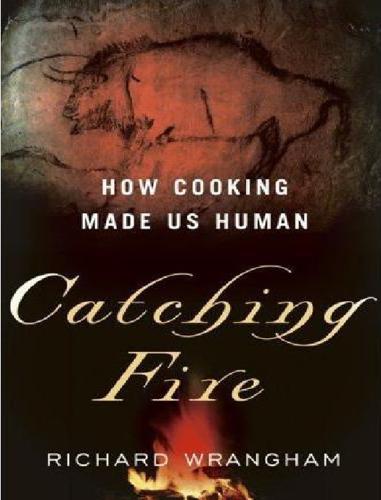
Catching Fire: How Cooking Made Us Human
by
Richard Wrangham
Published 15 Aug 2010
But Darwin showed no interest in knowing when fire was first controlled. His passion was evolution, and he thought fire was irrelevant to how we evolved. Like most people, he simply assumed that by the time our ancestors first controlled fire they were already human. He cited his fellow evolutionist Alfred Russel Wallace approvingly: “man is enabled through his mental faculties ‘to keep with an unchanged body in harmony with the changing universe.’” The control of fire was just another way for an unchanged body with an adept mental faculty to respond to a natural challenge. “When he migrates into a colder climate he uses clothes, builds sheds, and makes fires; and, by the aid of fire, cooks food otherwise indigestible . . . the lower animals, on the other hand, must have their bodily structure modified in order to survive under greatly changed conditions.”
…
O’Connell et al. (2002) provide a critique. 10 “probably the greatest [discovery], excepting language, ever made by man”: Darwin (1871 [2006]), p. 855. Accounts of learning to make fire, and reports of camping days that ended with a cooked evening meal, are in Darwin (1888). 10 He cited his fellow evolutionist Alfred Russel Wallace: Darwin (1871 [2006]), p. 867. 12 “People do not have to cook their food”: Lévi-Strauss (1969); Leach (1970), p. 92. 12 The celebrated French gastronomist Jean Anthelme Brillat-Savarin: Brillat-Savarin (1971), p. 279. 12 ideas suggesting how the control of fire: Coon (1962), Brace (1995), Perlès (1999), Goudsblom (1992).
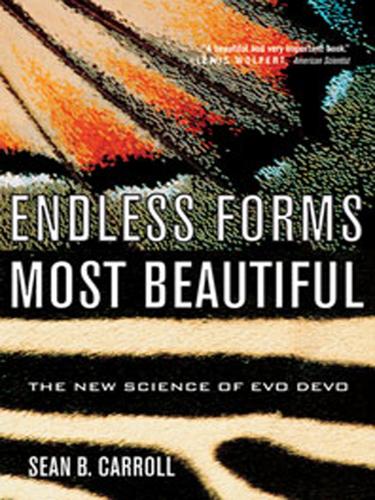
Endless Forms Most Beautiful: The New Science of Evo Devo
by
Sean B. Carroll
Published 10 Apr 2005
He leaped at the chance when the opportunity to sail on the Beagle arose in 1831. Darwin later wrote to Humboldt, “My whole course of life is due to having read and re-read as a youth, this personal narrative.” Two other Englishmen, Henry Walter Bates, a twenty-two-year-old office clerk and avid bug collector, and his self-taught naturalist friend, Alfred Russel Wallace, also dreamt of travel abroad to collect new species. Upon reading an American’s account of a journey to Brazil, Bates and Wallace immediately decided to head there (in 1848). Darwin’s voyage lasted five years, Bates remained in the Tropics for eleven years, and Wallace spent fourteen years over the course of two journeys.
…
Not only did Bates draw upon Darwin’s views, but Darwin even reviewed, edited, and wrote an “appreciation” for the one book Bates produced in his entire career, Naturalist on the River Amazons (1863). Darwin had predicted it to be a great success and he was right, for Bates’s writing proved to be superior to either Darwin or his original companion in the Amazon, Alfred Russel Wallace. Bates’s book is still a terrific read today. Among those 14,000 plus species collected were many butterflies, over 550 species from the region of Ega alone. Bates saw the value of his treasures through a Darwinian lens: “no descriptions can convey an adequate notion of the beauty and diversity in form and colour of this class of insects in the neighborhood of Ega.
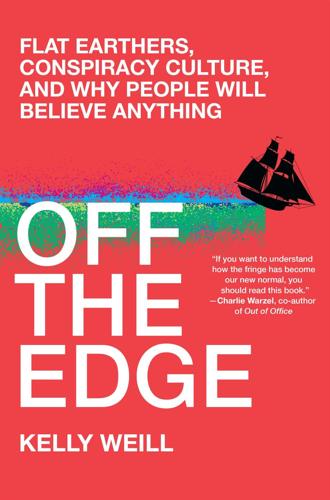
Off the Edge: Flat Earthers, Conspiracy Culture, and Why People Will Believe Anything
by
Kelly Weill
Published 22 Feb 2022
In a January 12, 1870, edition of Scientific Opinion, Hampden placed a bet in an advertisement offering £500 (approximately £60,000 or $82,000, present-day) for proof that the earth was round. For Globe Earthers, the wager seemed like free money. Three days later, Hampden had a challenger in the form of the revered scientist Alfred Russel Wallace. An esteemed naturalist and evolutionary biologist, Wallace had the famously bad luck of proposing the theory of natural selection around the same time as Charles Darwin. Wallace was also openly skeptical of religious zealotry and was an ideal foil for Flat Earthers looking to discredit scientific elites.
…
topic=11728.msg177985#msg177985. 25 branch in New York Parallax, “Officers and Council of the New York Zetetic Society, 1873,” Zetetic 2, no. 8–9 (October–November 1873): 54. 25 “has yet been found” Common Sense, Theoretical Astronomy Examined and Exposed (Job Caudwell, 1864), xiii. 26 “their mis-calculations” Common Sense, Theoretical Astronomy, 3. 26 front of Carpenter’s book Common Sense, vi. 26 “for our guidance” Common Sense, vi. 26 Church of England Garwood, 73. 26 correspondence with Carpenter Schadewald, Plane Truth. 27 placing Carpenter in his debt Charles H. Smith, ed., “Reply to Mr. Hampden’s Charges against Mr. Wallace (S202: 1871),” Alfred Russel Wallace Page, Western Kentucky University, people.wku.edu/charles.smith/wallace/S202.htm. 27 “more convincing than the ridicule” Smith, “Reply to Mr. Hampden’s Charges.” 28 start the surveying process anew Schadewald, Plane Truth. 28 “diametrically opposite decisions” Smith, “Reply.” 28 “done with him” Smith, “Reply.” 28 “my getting tired” “The Rotundity of the Earth,” Essex County Standard, March 12, 1875. 29 taking advantage of an idiot Garwood, 143. 29 “never be convinced” Dana Hunter, “Wallace’s Woeful Wager: How a Founder of Modern Biology Got Suckered by Flat-Earthers,” Scientific American, January 12, 2015, blogs.scientificamerican.com/rosetta-stones/wallace-8217-s-woeful-wager-how-a-founder-of-modern-biology-got-suckered-by-flat-earthers/. 29 make his measurements again Schadewald, Plane Truth. 29 phoning it in “The Bedford Level or Flat Earth Experiments,” Welney website, www.welney.org.uk/fens-rivers-washes/flat-earth/experiments.htm?
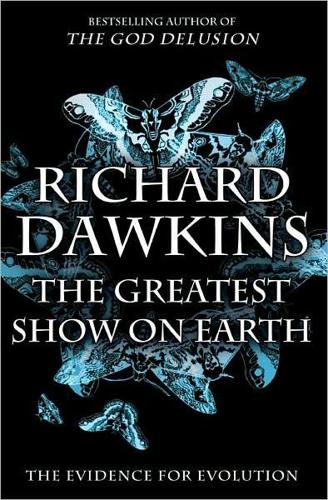
The Greatest Show on Earth: The Evidence for Evolution
by
Richard Dawkins
Published 21 Sep 2009
The Platonist regards any change in rabbits as a messy departure from the essential rabbit, and there will always be resistance to change – as if all real rabbits were tethered by an invisible elastic cord to the Essential Rabbit in the Sky. The evolutionary view of life is radically opposite. Descendants can depart indefinitely from the ancestral form, and each departure becomes a potential ancestor to future variants. Indeed, Alfred Russel Wallace, independent co-discoverer with Darwin of evolution by natural selection, actually called his paper ‘On the tendency of varieties to depart indefinitely from the original type’. If there is a ‘standard rabbit’, the accolade denotes no more than the centre of a bell-shaped distribution of real, scurrying, leaping, variable bunnies.
…
.; and Zhao, L.-J. 2008. ‘An ancestral turtle from the Late Triassic of southwestern China’, Nature, 456, 497– 501. Lorenz, K. 2002. Man Meets Dog, 2nd edn. London: Routledge. Malthus, T. R. 2007. An Essay on the Principle of Population. New York: Dover. (First publ. 1798.) Marchant, J. 1916. Alfred Russel Wallace: Letters and Reminiscences, vol. 1. London: Cassell. Martin, J. W. 1993. ‘The samurai crab’, Terra, 31, 30–4. Maynard Smith, J. 2008. The Theory of Evolution, 3rd edn. Cambridge: Cambridge University Press. Mayr, E. 1963. Animal Species and Evolution. Cambridge, Mass.: Harvard University Press.
…
Atlas of Anatomy. Stuttgart: Thieme. Sclater, A. 2003. ‘The extent of Charles Darwin’s knowledge of Mendel’, Georgia Journal of Science, 61, 134–7. Scott, E. C. 2004. Evolution vs. Creationism: An Introduction. Westport, Conn.: Greenwood. Shermer, M. 2002. In Darwin’s Shadow: The Life and Science of Alfred Russel Wallace. Oxford: Oxford University Press. Shubin, N. 2008. Your Inner Fish: A Journey into the 3.5 Billion-Year History of the Human Body. London: Allen Lane. Sibson, F. 1848. ‘On the blow-hole of the porpoise’, Philosophical Transactions of the Royal Society of London, 138, 117–23. Simons, D. J. and Chabris, C.
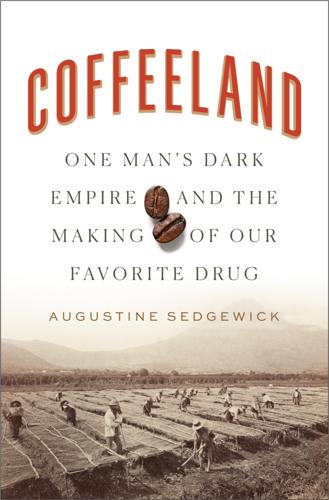
Coffeeland: One Man's Dark Empire and the Making of Our Favorite Drug
by
Augustine Sedgewick
Published 6 Apr 2020
From a safe distance it was “difficult to conceive a grander natural object”—closer up Izalco seemed a “monster,” its eruptions thundering like “the discharge of heavy artillery.”10 Even in an age when mass travel on steamships and passenger railways made it newly possible to see things that had once been known primarily from the pages of books, volcanoes were sites of special fascination. Many Europeans imbued volcanoes with a “strange and exceptional” power because they seemed so different from the steady ground of home. “It is only when actually gazing on an active volcano that one can fully realize its awfulness and grandeur,” wrote the naturalist Alfred Russel Wallace in 1869. The inhabitant of most parts of northern Europe, sees in the earth the emblem of stability and repose. His whole life-experience, and that of all his age and generation, teaches him that the earth is solid and firm, that its massive rocks may contain water in abundance but never fire; and these essential characteristics of the earth are manifest in every mountain his country contains.
…
That record made Central America, Montessus concluded, “probably the region of the globe in which the manifestations of volcanic and seismic phenomena are most frequent and continuous.”16 In El Salvador, volcanoes were the rule rather than the exception—and yet, far from being a wasteland, as Alfred Russel Wallace had predicted, the country was a verdant hothouse. “For days the traveler within its borders journeys over unbroken beds of lava, scoriae, and volcanic sand,” E. G. Squier wrote, “constituting, contrary to what most people would suppose, a soil of unbounded fertility, and densely covered with vegetation.”17 The volcanic soil was so rich that it seemed as if “no amount of misgovernment” could exhaust it.18 And from this exceptional soil, in greater and greater quantities, grew the second thing James Hill would have seen as he approached El Salvador for the first time: coffee trees climbing the hills that seemed to rise straight from the shore, and coffee beans that had been packed into rough fiber bags, loaded onto the train at the foot of Izalco, rolled down to the port, transferred onto lighters, and launched into the roiling harbor to meet the passing steamers
…
Sanborn, Winter in Central America, 228–38. 8. Galeas, Oligarca rebelde. 9. “A Trip in San Salvador,” New York Times, July 6, 1889, 2; Audley Gosling, “Central America and Its Resources,” North American Review 162, no. 470 (January 1896), 101. 10. “Birth of a Volcano,” San Francisco Chronicle, June 11, 1889, 6. 11. Alfred Russel Wallace, The Malay Archipelago: The Land of the Orangu-tan and the Bird of Paradise, 4th ed. (London: Macmillan, 1872), 286–87. 12. John Wesley Judd, Volcanoes: What They Are and What They Teach (New York: D. Appleton, 1881), 8. 13. William Eleroy Curtis, The Capitals of Spanish America (New York: Harper & Brothers, 1888), 188. 14.

The Age of Stagnation: Why Perpetual Growth Is Unattainable and the Global Economy Is in Peril
by
Satyajit Das
Published 9 Feb 2016
It was also underpinned by cultural attitudes and work ethics, which rewarded individual skill, energy, and dynamism. By the nineteenth century, England, Spain, Portugal, the Netherlands, Italy, France, and Germany had established major colonies in Asia, Africa, and the Americas, built upon what English naturalist Alfred Russel Wallace termed “the unblushing selfishness of the greatest civilized nations.”1 The objective was to strengthen economic and political power by controlling key resources and strategic trading routes, and to deny these advantages to sovereign rivals. Over time, the colonies came to resemble modern global supply chains.
…
Won't Enter Currency War Zone with Peashooter,” Bloomberg, 13 February 2013. www.bloomberg.com/news/2013-02-12/english-says-n-z-won-t-enter-currency-war-zone-with-peashooter.html. 12 The phrase was used by US secretary of state Madeleine Albright on NBC's Today Show, 19 February 1998. 13 The phrase “entangling alliances” was used by US President Thomas Jefferson in his 4 March 1801 inaugural address, and “in search of monsters to destroy” by US secretary of state John Quincy Adams in an address on 4 July 1821. 14 Winston Churchill, speech at Westminster College, Fulton, Missouri, 5 March 1946. www.fordham.edu/halsall/mod/churchill-iron.asp. 7. BRIC(S) to BIITS 1 Alfred Russell Wallace, The Wonderful Century; Its Successes and Its Failures, Swan Sonnenschein & Co., 1898. http://wallace-online.org/content/frameset?pageseq=397&itemID=S726&viewtype=side. 2 Karl Marx, “The Future Results of British Rule in India,” New-York Daily Tribune, 8 August 1853. 3 See Michael F. Bishop, “The Lion at Twilight,” National Review, 21 July 2014. https://nationalreview.com/nrd/articles/381881/lion-twilight. 4 Peter Whitfield, Travel: A Literary History, Bodleian Library, University of Oxford, 2011, p. 46. 5 Jawaharlal Nehru, speech on the Granting of Indian Independence, New Delhi, 14 August 1947. www.fordham.edu/halsall/mod/1947nehru1.html. 6 Attributed variously to German chancellor Helmut Schmidt, British prime minister Margaret Thatcher, and journalist Xan Smiley. 7 The actual quote is from Victor Hugo, Histoire d’un Crime (History of a Crime), written 1852, first published 1877.
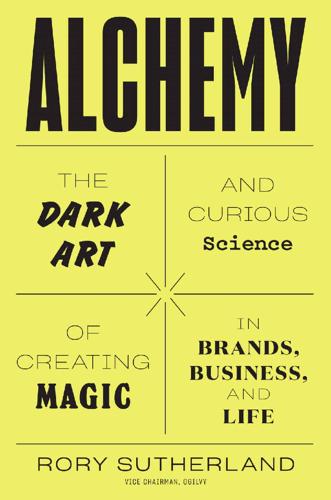
Alchemy: The Dark Art and Curious Science of Creating Magic in Brands, Business, and Life
by
Rory Sutherland
Published 6 May 2019
If you are a poisonous or foul-tasting beetle, for instance, it pays to look highly distinctive, so that birds will quickly learn to avoid eating you.* Lionfish (remember them?) deploy this tactic. Conversely, fruit (which is intended to be eaten) and flowers (which exist to attract the attention of insects) are highly distinctive, in order to encourage ‘repeat visits’. In a letter to Alfred Russel Wallace, Darwin wrote on 23 February 1867: ‘On Monday evening I called on Bates and put a difficulty before him, which he could not answer, and as on some former similar occasion, his first suggestion was, “you had better ask Wallace.” My difficulty is, why are caterpillars sometimes so beautifully and artistically coloured?’
…
*Purist, petrolhead (especially German) friends have always ridiculed me for this. ‘Ja, but you don’t have ze same sense of kontrol,’ they say. This is now rubbish – but, in defence of my Teutonic friends, European automatics were often quite bad 30 years ago. *The steam regulator (remember Alfred Russel Wallace, from Chapter 3.9) is, of course, another. *British readers, I’m aware that I’m at risk of sounding a bit ‘Swiss Tony’ here. *Or by looking at pornography – apparently. *In The Righteous Mind (2012). *I’m with the aliens here. Does anyone else have to put up with this? It drives me nuts.
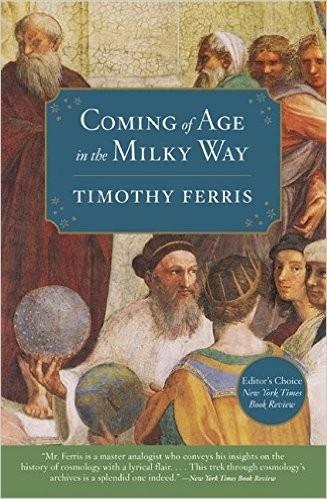
Coming of Age in the Milky Way
by
Timothy Ferris
Published 30 Jun 1988
He intended it to be a massive tome, the completion of which could safely be expected to take years; perhaps, like Copernicus, he would not have to live to read the reviews. But then, on June 3, 1858, when he had written only the first few chapters, everything changed. A letter bearing the postmark of the Malay Archipelago arrived at Darwin’s home. It came from the naturalist Alfred Russel Wallace. It contained the draft of an essay by Wallace titled, “On the Tendency of Varieties to Depart Indefinitely from the Original Type.” Wallace asked for Darwin’s reactions to the paper. Darwin had a reaction, all right, and it was one of horrified astonishment: The theory outlined in the essay was identical to Darwin’s own.
…
The Kantian Philosophy of Space. Port Washington, N.Y.: Kennikat, 1965. Gell-Mann, Murray, and Yuval Ne’eman. The Eightfold Way. New York: Benjamin, 1964. Application of symmetry precepts to the study of the strong interaction. George, Wilma. Biologist Philosopher: A Study of the Life and Writings of Alfred Russel Wallace. New York: Abelard-Schuman, 1964. Geroch, Robert. General Relativity from A to B. Chicago: University of Chicago Press, 1978. Nonmathematical introduction. Geymonat, Ludovico. Galileo Galilei: A Biography and Inquiry into His Philosophy of Science, trans. Stillman Drake. New York: McGraw-Hill, 1965.
…
The Fractal Geometry of Nature. New York: Freeman, 1983. Introduction to fractal geometry, by its founder. Manier, E. The Young Darwin and His Cultural Circle. Boston: Reidel, 1978. Manuel, Frank E. A Portrait of Isaac Newton. Washington, D.C.: New Republic, 1968. Psychological study. Marchant, James. Alfred Russel Wallace: Utters and Reminiscences. 2 vols. London: Cassel & Co., 1916. Marques, A.H. de Oliveira. History of Portugal. New York: Columbia University Press, 1972. Marshak, Robert Eugene. Conceptual Foundations of Modern Particle Physics. River Edge, N.J.: World Scientific, 1993. Martins, J.P.
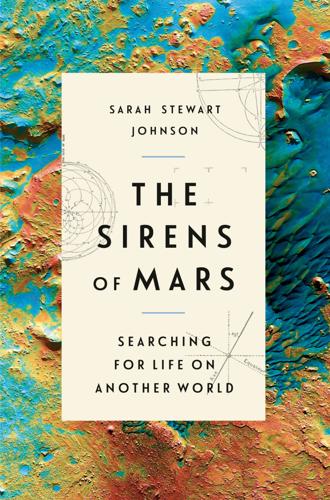
The Sirens of Mars: Searching for Life on Another World
by
Sarah Stewart Johnson
Published 6 Jul 2020
Anticipating that readers were unlikely to be impressed, Lowell insisted on including the disclaimer that the photographs were three steps removed from their original negatives, having undergone photographic printing, halftoning, and press printing. Despite his reassurance to readers that on the original negatives “[the canals] are there, and the film refuses to report them other than they are,” they could hardly be seen. Things continued to unravel. The same year, the celebrated British naturalist Alfred Russel Wallace, who independently conceived of the theory of natural selection, launched an attack on the concept based on his own research, arguing that Mars was likely too cold for liquid water and that a planetwide irrigation system was an absurdity. In 1909, the Greco-French astronomer Eugène Antoniadi, a longtime supporter of Lowell, published a map of Mars without any canals, practically the first such depiction in twenty-five years.
…
Lane, Geographies of Mars: Seeing and Knowing the Red Planet. (Chicago: University of Chicago Press, 2011), pp. 118–120. THE DISCLAIMER Lane, “Mapping the Mars Canal Mania,” pp. 198–211. “[THE CANALS] ARE THERE ” Lowell, “New photographs of Mars,” The Century Magazine, pp. 303–311. LAUNCHED AN ATTACK Alfred Russel Wallace, Is Mars Habitable? A Critical Examination of Professor Percival Lowell’s Book “Mars and Its Canals,” with an Alternate Explanation (London: Macmillan and Co., Ltd., 1907), pp. 55–77. THE GRECO-FRENCH ASTRONOMER EUGÈNE ANTONIADI Antoniadi was an exceptionally skillful artist as well as an astronomer, who had worked since the 1890s with Flammarion at the latter’s observatory at Juvisy (near Paris).

The Railways: Nation, Network and People
by
Simon Bradley
Published 23 Sep 2015
On the Manchester & Leeds Railway a bar and crossbar were fitted within, making four standing enclosures or pens (the parallel with handling livestock is exact here). Occupants of these vehicles were not even granted the honorific of third class by the company, which used the term ‘wagon passengers’. The London & Birmingham was using wagon-type carriages by Christmas Eve, 1838, when the teenaged Alfred Russel Wallace (1823–1913) took one from Berkhamsted to London. His autobiography recalls ‘open trucks identical with modern goods trucks, except that they had hinged doors, but with no seats whatever, so that any one tired of standing must sit upon the floor’. Despite mild weather for the season and a speed not over 20 mph, ‘the wind was very disagreeable’.
…
Each newly accepted company was assigned to one of these associates, who were expected to consult with the chief on details and difficulties. For a competent surveyor – especially one with the right combination of physical stamina and finesse in negotiation – the 1840s were a golden age. The young Alfred Russel Wallace and his less fortunate brother (on whom see Chapter 3), drawn into railway surveying in the early 1840s, are representative figures from this time. But as engineers increasingly took over the central task of determining the route, surveyors retreated from their traditional land-measuring roles in order to concentrate on new challenges of valuation and arbitration, often railway-related.
…
Clinker (1971) Vamplew: Wray Vamplew, The Turf: A Social and Economic History of Horse Racing (1976) Vaughan 1: Adrian Vaughan, Grub, Water and Relief: Tales of the Great Western, 1835–1892 (1985) Vaughan 2: Adrian Vaughan, Isambard Kingdom Brunel: Engineering Knight Errant (1991) Vaughan 3: Adrian Vaughan, A Pictorial Record of Great Western Architecture (1977) Vaughan 4: Adrian Vaughan, Signalman’s Morning with Signalman’s Twilight (1984) VCH: Victoria County Histories Votolato: Gregory Votolato, Transport Design: A Travel History (2007) Walker: Charles Walker, Thomas Brassey: Railway Builder (1969) Wallace: Alfred Russel Wallace, My Life (1908) ‘Walter’: ‘Walter’, My Secret Life (1888) Walton: John K. Walton, ‘Power, Speed and Glamour: The Naming of Express Steam Locomotives in Inter-war Britain’, JTH 26/2 (2005), 1–19 Ward: Colin Ward (ed.), Vandalism (1973) Waugh: Arthur Waugh, One Man’s Road (1931) Way: R.
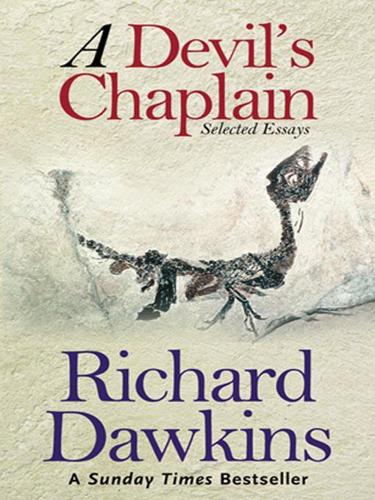
A Devil's Chaplain: Selected Writings
by
Richard Dawkins
Published 1 Jan 2004
The ostensible connection between sexual selection and the descent of man is that Darwin believed the first was a key to understanding the second; especially to understanding human races, a topic which preoccupied Victorians more than it does us. But, as the historian and philosopher of science Michael Ruse has remarked to me, there was a tighter thread binding the two topics. They were the only two sources of disagreement between Darwin and his co-discoverer of natural selection. Alfred Russel Wallace never took kindly to sexual selection, at least in its full-blooded Darwinian form. And Wallace, though he coined the word Darwinism and described himself as ‘more Darwinian than Darwin’, stopped short of the materialism implied by Darwin’s view of the human mind. These disagreements with Wallace were all the more important to Darwin because these two great men agreed on almost everything else.
…
Lloyd (eds.), Keywords in evolutionary biology (Cambridge, Mass., Harvard University Press, 1992) 38 Charles Darwin, The Descent of Man, chapter XX of 1st edn, chapter XIX of 2nd edn 39 http://members.shaw.ca/mcfetridge/darwin.html 40 http://www.workersliberty.org/wlmags/wl61/dawkins.htm 41 Fisher (1930), ibid. 42 Letter dated ‘Tuesday, February, 1866’. Published in James Marchant, Alfred Russel Wallace: Letters and Reminiscences, vol. 1 (London, Cassell, 1916). Reproduced by courtesy of the British Library, thanks to Dr Jeremy John 43 Fisher (1930), ibid. 44 W. D. Hamilton, ‘Extraordinary Sex Ratios’ (1966). Reprinted in his Narrow Roads of Gene Land, vol. 1 (Oxford, W. H. Freeman, 1996) 45 E.

The Dictionary People: The Unsung Heroes Who Created the Oxford English Dictionary
by
Sarah Ogilvie
Published 17 Oct 2023
On 22 October 1877, Eleanor had stepped for the first time into the imposing circular Reading Room at the British Museum where, under its vast dome and huge windows, her father had written Das Kapital. She had been employed by Furnivall to help with his work for the Philological Society and the Chaucer and New Shakspere Societies. Despite her love of Shakespeare, she was easily distracted. Her reading at the end of 1877 included the naturalist Alfred Russel Wallace on spiritualism, and John Nevil Maskelyne’s exposure of spiritualist frauds. She also embarked on her translation of Lissagaray’s History of the Paris Commune of 1871 – an account based on his participation in the event. Four years later, in 1881, she was still working in the British Museum Reading Room, surrounded now not by volumes of Shakespeare or books on spiritualism, but Cassell’s Dictionary and a variety of glossaries, as she searched for words for Murray’s Dictionary.
…
By 1887, when she went to Russia, Elizabeth had stopped volunteering for the Dictionary – which had become her younger sister’s great passion – and was devoted to astronomy. But prior to that, from 1880 to 1883, she brought her up-to-date scientific expertise to the Dictionary. She read the evolutionist Alfred Russel Wallace’s Island Life (1880). Russel’s exploration of the astronomical effects on the geology and climate of islands must have fascinated her along with the details of island flora and fauna, and she sent in 150 slips from the book. From James Clerk Maxwell’s 1873 Treatise on Electricity and Magnetism (cited 158 times in the Dictionary) she produced 250 slips.
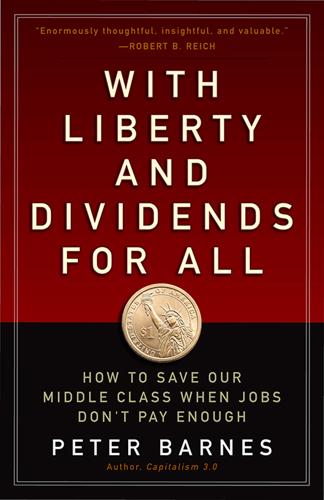
With Liberty and Dividends for All: How to Save Our Middle Class When Jobs Don't Pay Enough
by
Peter Barnes
Published 31 Jul 2014
The organizing principles are over two centuries old and have been road tested in Alaska. Our challenge now is to scale the concept to a meaningful size. That said, the current political environment makes such scaling all but impossible. It therefore behooves us to take a longer view. As Charles Darwin and Alfred Russel Wallace noted in the nineteenth century, living systems evolve through a process of variation and selection. Many nonliving systems, including economies, evolve in a similar way. Capitalism in particular has been characterized as a system of “creative destruction.”1 One aspect of evolution that remained unclear for decades after Darwin and Wallace was whether the vary-and-select process proceeds gradually or in sudden bursts.

Ageless: The New Science of Getting Older Without Getting Old
by
Andrew Steele
Published 24 Dec 2020
These observations formed part of the huge body of work which underpinned one of the greatest discoveries in the history of scientific thought: the theory of evolution by natural selection. Darwin published this groundbreaking idea in On the origin of species, two decades after his stay in the Galápagos. His great insight (which was independently conceived by his contemporary Alfred Russel Wallace) was that animals, plants and all life forms are optimised for their environment by ‘descent with modification’. Baby animals will differ, quite at random, from their parents; the majority of those differences will be negative or neutral, but those handful with advantageous differences will have greater success surviving, reproducing and thus passing on those qualities to their (more numerous) offspring; those offspring will themselves differ in small, random ways, some slightly better and some slightly worse, and so on.
…
In humans, these processes continue for decades without breaking down. Supplied with energy, there’s no reason in principle why these processes should lose their efficacy over time. Why doesn’t evolution keep on ramping up the effectiveness of self-repair until it becomes flawless indefinitely? It was probably Alfred Russel Wallace who came up with the first evolutionary theory of ageing. He suggested, in notes written sometime between 1865 and 1870, that older animals ‘as consumers of nourishment … are an injury to their successors’: in an environment where food is limited, too many old animals hanging around and consuming resources would make it harder for their descendants to survive.
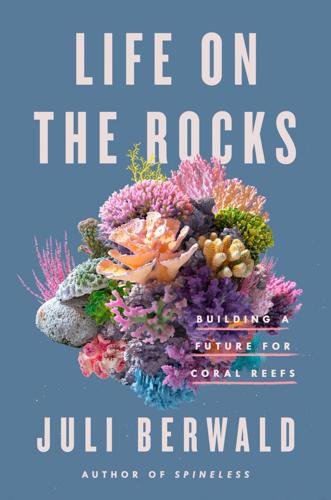
Life on the Rocks: Building a Future for Coral Reefs
by
Juli Berwald
Published 4 Apr 2022
On his first sail around the world in 1521, Ferdinand Magellan brought along an Italian assistant named Antonio Pigafetta, who noticed that the animals and plants in the Philippines to the north of Sulawesi were strikingly different from those on the Maluku Islands to the southeast of Sulawesi. Several centuries later, acclaimed British naturalist Alfred Russel Wallace visited the region and confirmed Pigafetta’s observations. Tigers and rhinoceros, like those found in Asia, populated islands to the north and west of Sulawesi. Kangaroos and platypuses, like those found in Australia, inhabited islands to the southeast. Wallace hypothesized that the deep, narrow channel Noel had just waved at was the reason for the differences, though, like Darwin with his hypothesis about coral atoll formation, Wallace was missing a key piece of information.
…
McClanahan et al., “Large Geographic Variability in the Resistance of Corals to Thermal Stress,” Global Ecology and Biogeography 29, no. 12 (2020): 2229–47, https://onlinelibrary.wiley.com/doi/epdf/10.1111/geb.13191. GO TO NOTE REFERENCE IN TEXT Chapter 19. A Reef of Hope was Wallace’s line: Alfred Russel Wallace, “On the Physical Geography of the Malay Archipelago,” reprinted in Proceedings of the Royal Geographical Society 7 (1845): 205–12, https://archive.org/details/proceedingsmonth07royauoft/page/n217/mode/2up?view=theater. Ernst Mayr, “Wallace’s Line in the Light of Recent Zoogeographic Studies,” The Quarterly Review of Biology 19, no. 1 (1944), https://www.journals.uchicago.edu/doi/10.1086/394684.

Giving the Devil His Due: Reflections of a Scientific Humanist
by
Michael Shermer
Published 8 Apr 2020
The answer is obvious: if new species are created naturally instead of supernaturally, there’s no place for a creator God. No wonder Darwin waited twenty years before publishing his theory, and he would have waited even longer had he not rushed into print for priority’s sake because the naturalist Alfred Russel Wallace had sent Darwin his own theory of evolution in 1858, the year before Darwin published On the Origin of Species.3 And no wonder it took some time for Darwin to convince others of the theory’s veracity. The geologist Charles Lyell, a close friend and colleague of Darwin who groomed him into the world of British science and whose geological works Darwin read on the Beagle, withheld his support for a full nine years and even then pulled back from fully embracing naturalism, leaving room for providential design underlying the entire natural system.
…
Letter to Joseph Hooker dated January 14, 1844, quoted in Browne, Janet. 1995.Voyaging: Charles Darwin. A Biography. New York: Knopf, 452. 3. For a detailed account of the “priority dispute” between Darwin and Wallace, see: Shermer, Michael. 2002. In Darwin’s Shadow: The Life and Science of Alfred Russel Wallace. New York: Oxford University Press. 4. All quotes on the reaction to Darwin’s theory are in Korey, Kenneth. 1984. The Essential Darwin: Selections and Commentary. Boston: Little, Brown. 5. Pew Research Center. 2005. “Religion a Strength and Weakness for Both Parties. Public Divided on Origins of Life,” http://bit.ly/2kFVHu6 6.
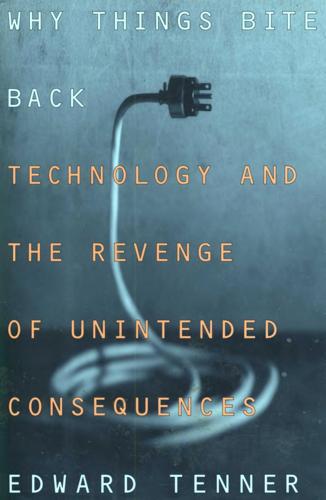
Why Things Bite Back: Technology and the Revenge of Unintended Consequences
by
Edward Tenner
Published 1 Sep 1997
Warwick Anderson and Christopher Lever have written about England, for example, where the patronage of sporting aristocrats and venturesome gentleman breeders took the place of French state sponsorship and institute connections. The London Acclimatization Society's founder, the eccentric surgeon Frank Buckland, was an omnivore who did not stop at the horse or even the kangaroo, but essayed elephant trunk soup and roast giraffe. More seriously, Charles Darwin and Alfred Russel Wallace wrote on acclimatization, studying the experience of breeders and naturalists. Both Darwin and Wallace believed plants and animals adapted to new surroundings mainly by natural selection, but they also believed that the new environment could sometimes produce an inheritable change in an individual organism.4 In the United States, organized acclimatizing remained small, even when measured against the scale of the English movement, which never exceeded three hundred members (even after a merger with the Ornithological Society) and was dissolved in 1866.
…
But the days were ending when gentlemen amateur acclimatizers could undertake to enrich the wildlife of North America, Australia, and New Zealand (to name just those areas where their influence was greatest). "Acclimatization" still rated over six pages of the eleventh edition of the Ency- clopaedia Britannica in 19 1 o by Alfred Russel Wallace himself, but the eighty-seven-year-old biologist underlined at the outset that the plants and animals that thrive in new environments (like European weeds in the United States) don't need gradual adaptation to their new surroundings. On the other hand, organisms that have been acclimatized to new surroundings, even those as hardy and widespread as the potato, usually can't survive competitors and predators without human intervention. ` We might have expected the rise of scientific professionalism in the nineteenth century to reduce significantly the perils of animal and plant introductions.
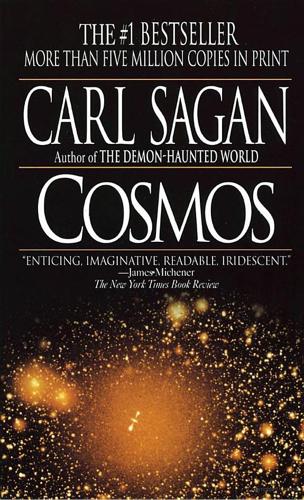
Cosmos
by
Carl Sagan
Published 1 Jan 1980
If artificial selection can make such major changes in so short a period of time, what must natural selection, working over billions of years, be capable of? The answer is all the beauty and diversity of the biological world. Evolution is a fact, not a theory. That the mechanism of evolution is natural selection is the great discovery associated with the names of Charles Darwin and Alfred Russel Wallace. More than a century ago, they stressed that nature is prolific, that many more animals and plants are born than can possibly survive and that therefore the environment selects those varieties which are, by accident, better suited for survival. Mutations—sudden changes in heredity—breed true.
…
He imagined the Martian temperatures a little on the chilly side but still as comfortable as “the South of England.” The air was thin, but there was enough oxygen to be breathable. Water was rare, but the elegant network of canals carried the life-giving fluid all over the planet. What was in retrospect the most serious contemporary challenge to Lowell’s ideas came from an unlikely source. In 1907, Alfred Russel Wallace, co-discoverer of evolution by natural selection, was asked to review one of Lowell’s books. He had been an engineer in his youth and, while somewhat credulous on such issues as extrasensory perception, was admirably skeptical on the habitability of Mars. Wallace showed that Lowell had erred in his calculation of the average temperatures on Mars; instead of being as temperate as the South of England, they were, with few exceptions, everywhere below the freezing point of water.

The Red Queen: Sex and the Evolution of Human Nature
by
Matt Ridley
Published 14 Aug 1993
They wanted, rightly, to know why females would find long tails sexy, what possible value they could bring the hens. For a century after he proposed it, Darwin’s theory of female choice was ignored while biologists tied themselves in furious knots to come up with other explanations. Darwin’s contemporary, Alfred Russel Wallace’s preference was initially that no ornaments, not even the peacock’s tail, required any explanation other than that they served some useful purpose of camouflage. Later he thought they were the simple expression of surplus male vigour. Julian Huxley, who dominated discussion of the matter for many years, much preferred to believe that almost all ornaments and ritual displays were for intimidating other males.
…
Their position is that, especially on leks, females choose males according to the gaudiness of their colours, the length of their plumes, the virtuosity of their songs or whatever, because the species is ruled by an arbitrary fashion for preferring beauty that none dares buck. The Good-gene people follow Alfred Russel Wallace (though they do not know it) in arguing that, arbitrary and foolish as it may seem for a female to choose a male because his tail is long or his song loud, there is method in her madness. The tail or the song tells each female exactly how good are the genes of each male. The fact that he can sing loudly or grow and look after a long tail proves that he can father healthy and vigorous daughters and sons just as surely as the fishing ability of a tern tells his mate that he can feed a growing family.
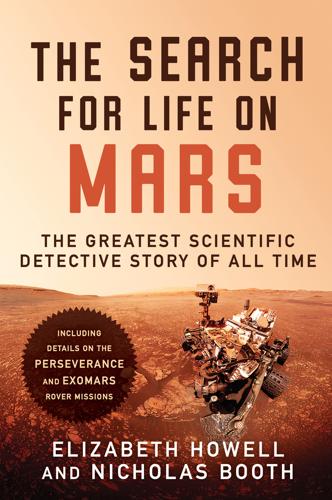
The Search for Life on Mars
by
Elizabeth Howell
Published 14 Apr 2020
Nevertheless, in 1964, the year of Slipher’s death, his canal-filled map of Mars was officially adopted by US Air Force cartographers. In 1907, as the historian William Graves Hoyt notes, “the long-simmering canal controversy turned to a full boil” when others weighed in. Most important among them was Alfred Russel Wallace (who had independently confirmed Charles Darwin’s findings on evolution). Now in his eighties, Wallace penned a whole book to refute Lowell’s findings. Wallace pointed out that the canals were only possible if the Red Planet was completely flat. If that were the case, however, the water would flow and irrigate the land of its own accord.
…
William Graves Hoyt’s Lowell and Mars is probably the standard reference to his work in Flagstaff along with William Sheehan’s The Planet Mars: A History of Observation and Discovery, which puts everything into perspective. Here they are buttressed by the biography by Lowell’s brother as well as some contemporary newspaper reports (see below). Further information comes from chapter 3 in Mark Washburn’s excellent Mars at Last!: Canals and Controversy (New York: Putnam, 1977), along with Alfred Russel Wallace’s Is Mars Habitable? (Whitefish, MT: Kessinger, 2010). Our thanks to Samantha Thompson, former curator at the Lowell Observatory and now at the Smithsonian Air and Space Museum, for her reading of the section about Lowell and his work. Contemporaneous newspaper coverage reveals interesting nuances to the story of Lowell and Mars.
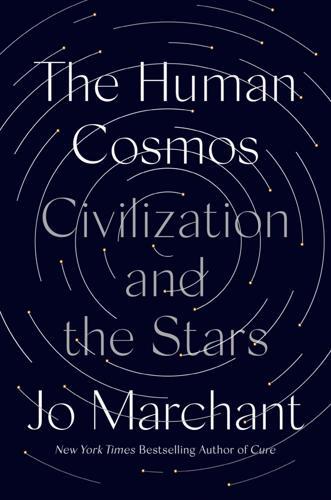
The Human Cosmos: A Secret History of the Stars
by
Jo Marchant
Published 15 Jan 2020
Opposing figures included the philosopher and scientist William Whewell, who argued in 1853 that the universe being so perfect for our needs proves that God designed it just for us. Charles Darwin was scornful, privately describing Whewell’s judgment that the solar system is adapted to us and not the other way around as an “instance of arrogance!!” But Darwin’s cofounder of the theory of natural selection, biologist Alfred Russel Wallace, ultimately agreed with Whewell. “The supreme end and purpose of this vast universe,” Wallace concluded in 1903, “was the production and development of the living soul in the perishable body of man.” For a while, it seemed (to enthusiasts at least) that improved telescopes were bringing these aliens within reach.
…
: Michael Crowe, The Extraterrestrial Life Debate 1750–1900 (New York: Dover, 1999), 271; quoted in Iris Fry, “The Philosophy of Astrobiology: The Copernican and Darwinian Philosophical Presuppositions,” in The Impact of Discovering Life beyond Earth, ed. Steven Dick (Cambridge, UK: Cambridge University Press, 2015), 23–37. “The supreme end”: Alfred Russel Wallace, “Man’s Place in the Universe,” The Independent 55 (1903): 473–83; quoted in Dick, “Twentieth Century History.” forests and circular buildings: Michael Crowe, “William and John Herschel’s Quest for Extraterrestrial Intelligent Life,” in The Scientific Legacy of William Herschel, ed. Clifford Cunningham (New York: Springer, 2017), 239–74.
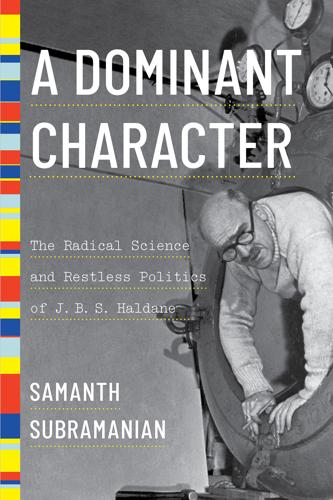
A Dominant Character
by
Samanth Subramanian
Published 27 Apr 2020
These events made him an incandescent persona: the man who lifted the arras that hid the work of nature; the man who stepped down, into the everyday world, from his tower of ivory; the man who shrugged away convention and defied authority. They ratified Haldane’s reputation as a brilliant, eccentric mind. You never knew what he could not do; you never knew what he would do next. 4. Red Haldane OUT IN THE HOT, planed waters of the western Pacific, in January 1858, Alfred Russel Wallace left the coast of Ternate and made for the larger, squid-shaped island of Halmahera: 3 hours of rowing and sailing in a boat owned by a Chinese man and staffed by Papuan slaves. On Halmahera he rented a hut for 5 guilders a month in a village girded by low hills. The knots of limestone reminded him of Wales, of home.
…
The article’s subtitle was “My Relations with Darwin in Reference to the Theory of Natural Selection.” 158 “for amusement”: Darwin, Charles, The Autobiography of Charles Darwin (London: Collins, 1958), 120. 158 “not be considered as comfortable asylums”: Thomas Malthus, An Essay on the Principle of Population (London: J. Johnson, 1798), 37. 158 “our population is more largely renewed”: Alfred Russel Wallace, “Human Selection,” Fortnightly Review 48 (September 1890). 159 “progress is merely accidental”: Marx to Engels, August 7, 1866. 160 volunteered to act as a bouncer: From Haldane, Why I Am a Cooperator. 161 “I consider the present distribution”: From Haldane’s essay “What I Think About,” in The Inequality of Man, 218–19. 161 “I would trust Shakespeare”: From Haldane’s essay “Possibilities of Human Evolution,” in The Inequality of Man, 91–92. 161 “How, in a society based on hierarchies”: Gary Werskey, The Visible College, 108. 162 “for the stupid to inherit”: Julian Huxley, What Dare I Think?
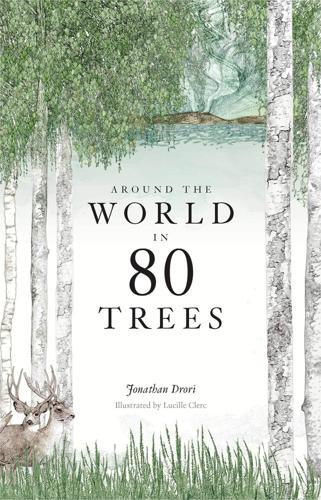
Around the World in 80 Trees
by
Jonathan Drori
Published 28 May 2018
In a confined space the smell can be overwhelming, and signs telling people not to bring durians into hotels or aircraft are common in Malaysia and Singapore. On the other hand, we are very suggestible when it comes to flavour, and perhaps Westerners who haven’t grown up with the fruit are prejudiced by its reputation and primed to find it disagreeable. Not so Alfred Russel Wallace, the great nineteenth-century naturalist, who gushed, ‘A rich butter-like custard highly flavoured with almonds gives the best general idea of it, but intermingled with it come wafts of … creamcheese, onion-sauce, brown sherry, and other incongruities. Then there is a rich glutinous smoothness in the pulp which nothing else possesses, but which adds to its delicacy … the more you eat of it the less you feel inclined to stop.
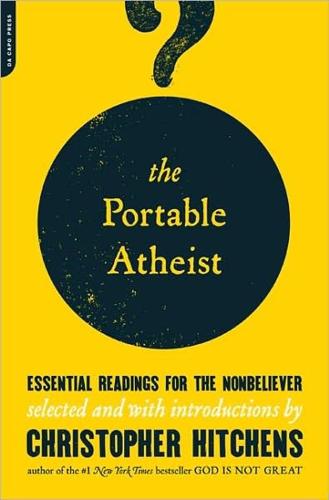
The Portable Atheist: Essential Readings for the Nonbeliever
by
Christopher Hitchens
Published 14 Jun 2007
As in the case of the doctors mentioned earlier, a commitment to experiment and find evidence is no guarantee of immunity to superstition and worse. Sir Isaac Newton was prey to the most idiotic opinions about alchemy. Joseph Priestley, the courageous Unitarian and skeptic who discovered oxygen, was a believer in the phlogiston theory. Alfred Russel Wallace, one of Darwin’s greatest collaborators and progenitors, was a dedicated attender of spiritualist sessions where “ectoplasm” was produced by frauds to the applause of morons. Even today, there are important men of science—admittedly a minority—who maintain that their findings are compatible with belief in a creator.
…
Modern cosmologists even speak of a Copernican principle: the rule that no cosmological theory can be taken seriously that puts our own galaxy at any distinctive place in the universe. Life, too, has been demystified. Justus von Liebig and other organic chemists in the early nineteenth century demonstrated that there was no barrier to the laboratory synthesis of chemicals like uric acid that are associated with life. Most important of all were Charles Darwin and Alfred Russel Wallace, who showed how the wonderful capabilities of living things could evolve through natural selection with no outside plan or guidance. The process of demystification has accelerated in this century, in the continued success of biochemistry and molecular biology in explaining the workings of living things.
…
“That Undiscovered Country” “Theological-Political Treatise” Theology “There Is No God” Thompson “Thoughts of God” Tillich, Paul Tolstoy Trevor-Roper, Hugh Tucker, Wilson Turner, Edwin Twain, Mark Tyndale, William Udayana Unification Church (Moonies) Updike, John Ussher, James Uthman Van Doren, Carl Van Gogh, Theo Vaucouleurs, Gerard de Vidal, Gore Viereck, George Sylvester Vinci, Leonardo da Voltaire Von Liebig, Justus Waco, Texas Wallace, Alfred Russel Wallace, Lew “The Wandering Jew and the Second Coming” Wansbrough Warrag, Ibn Watson, Charles Watt, Montgomery Weart, Spencer Weinberg, Steven Wellhausen Wells, G. A. Wensinck Werblowsky, Zwi Wesley, John Wheeler, John White, Ellen Whitman, Walt “Why I Am an Unbeliever” Why I Am Not a Christian Why I Am Not a Muslim Wicca Wickramasinghe, Chandra Wilberforce, Bishop Wilczek, Frank Wilson, E.
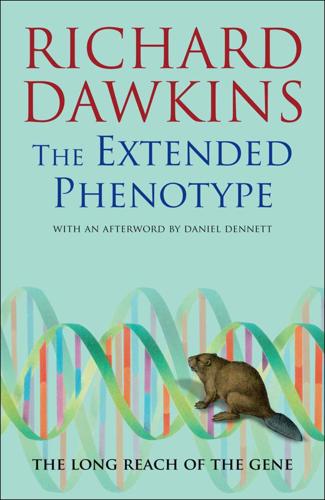
The Extended Phenotype: The Long Reach of the Gene
by
Richard Dawkins
Published 1 Jan 1982
Journal of Theoretical Biology 78, 325–345. Daly, M. (1980). Contentious genes. Journal of Social and Biological Structures 3, 77–81. Darwin, C. R. (1859). The Origin of Species. 1st edn, reprinted 1968. Harmondsworth, Middx: Penguin. Darwin, C. R. (1866). Letter to A. R. Wallace, dated 5 July. In James Marchant (1916), Alfred Russel Wallace Letters and Reminiscences, Vol. 1, pp. 174–176. London: Cassell. Davies, N. B. (1982). Alternative strategies and competition for scarce resources. In Current problems in sociobiology (ed. King’s College Sociobiology Group), pp. 363–380. Cambridge: Cambridge University Press. Dawkins, R. (1968).
…
J. (1978). A critical review of the models of group selection. Quarterly Review of Biology 53, 101–114. Waldman, B. & Adler, K. (1979). Toad tadpoles associate preferentially with siblings. Nature 282, 611–613. Wallace, A. R. (1866). Letter to Charles Darwin dated 2 July. In J. Marchant (1916) Alfred Russel Wallace Letters and Reminiscences, Vol. 1, pp. 170–174. London: Cassell. Watson, J. D. (1976). Molecular Biology of the Gene. Menlo Park: Benjamin. Weinrich, J. D. (1976). Human reproductive strategy: the importance of income unpredictability, and the evolution of non-reproduction. PhD dissertation, Harvard University, Cambridge, Mass.
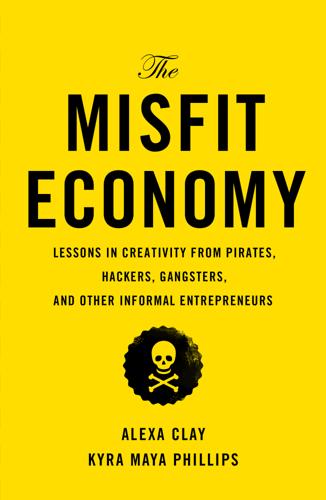
The Misfit Economy: Lessons in Creativity From Pirates, Hackers, Gangsters and Other Informal Entrepreneurs
by
Alexa Clay
and
Kyra Maya Phillips
Published 23 Jun 2015
The discovery of the double-helix structure of DNA is one example—James Watson and Francis Crick are known to have been working on the problem at the University of Cambridge while Rosalind Franklin and Maurice Wilkins at the University of London did the same.10 The theory of evolution, while largely accredited to Charles Darwin, was independently conceived by British biologist Alfred Russel Wallace. Wallace sent Darwin a letter outlining his theories of evolution. Darwin was shocked to find that Wallace’s theories were almost identical to his own, which at the time were unpublished. The two went on to coauthor On the Tendency of Species to Form Varieties, and on the Perpetuation of Varieties and Species by Natural Means of Selection, the first publication about natural selection, in 1858.
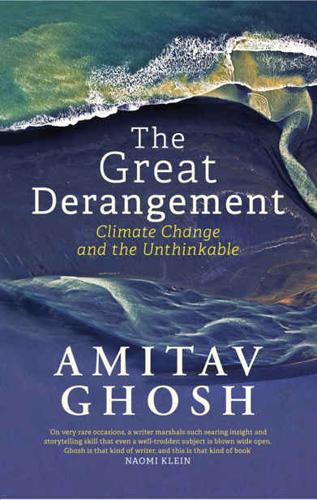
The Great Derangement: Climate Change and the Unthinkable
by
Amitav Ghosh
Published 16 Jan 2018
I could cite many other instances, ranging from the mathematics of War and Peace to the chemistry of Alice in Wonderland, but there is no need: it is hardly a matter of dispute that Western writers remained deeply engaged with science through the nineteenth century. Nor was this a one-sided engagement. Naturalists and scientists not only read but also produced some of the most significant literary works of the nineteenth century, such as Darwin’s Voyage of the Beagle and Alfred Russell Wallace’s The Malay Archipelago. Their works, in turn, served as an inspiration to a great number of poets and writers, including Tennyson. How, then, did the provinces of the imaginative and the scientific come to be so sharply divided from each other? According to Latour the project of partitioning is always supported by a related enterprise, one that he describes as ‘purification’, which is intended to ensure that Nature is consigned entirely to the sciences, remaining forever off limits to Culture.

Neutrino Hunters: The Thrilling Chase for a Ghostly Particle to Unlock the Secrets of the Universe
by
Ray Jayawardhana
Published 10 Dec 2013
So he derived his own independent estimates for the age of the Earth, by assuming that the Earth had cooled steadily from a molten initial state, and for the age of the Sun, assuming that it was powered by slow contraction under its own gravity. Both of Thomson’s calculations resulted in relatively young ages that scientists deemed too short to account for biological evolution. Darwin worried about the discrepancy between his estimates and Thomson’s age estimates. In a letter to Alfred Russel Wallace, the codiscoverer of natural selection, Darwin complained that “Thomson’s views on the recent age of the world have been for some time one of my sorest troubles.” Darwin went so far as to remove any mention of specific timescales from later editions of his tome. Back then, scientists were not aware of nuclear fusion, which we now know fuels the Sun, and they had not discovered radioactivity, which provides a continuing heat source inside the Earth.

Scale: The Universal Laws of Growth, Innovation, Sustainability, and the Pace of Life in Organisms, Cities, Economies, and Companies
by
Geoffrey West
Published 15 May 2017
We have been coevolving together in a never-ending multidimensional interplay of interaction, conflict, and adaptation. Each organism, each of its organs and subsystems, each cell type and genome, has therefore evolved following its own unique history in its own ever-changing environmental niche. The principle of natural selection, introduced independently by Charles Darwin and Alfred Russell Wallace, is key to the theory of evolution and the origin of species. Natural selection, or the “survival of the fittest,” is the gradual process by which a successful variation in some inheritable trait or characteristic becomes fixed in a population through the differential reproductive success of organisms that have developed this trait by interacting with their environment.
…
A classic criticism that I find particularly amusing was that of Marx and Engels, who dismissed Malthus as a “lackey of the bourgeoisie,” sounding like a parody of themselves from a Monty Python skit. On the other hand, Malthus’s ideas have influenced many important thinkers, even if some didn’t entirely agree with everything he said. These have included the great economist John Maynard Keynes as well as Alfred Russel Wallace and Charles Darwin, the originators of the theory of natural selection. In more recent years with the burgeoning concerns over global sustainability, Malthus’s ideas have been broadened to include questions of resource limitation in general (not just food), with less emphasis on the poor and even on population growth, but rather on general questions of the environment, climate change, and the recognition that these issues transcend geography and economic class.
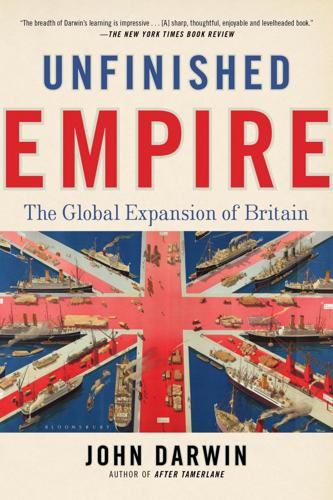
Unfinished Empire: The Global Expansion of Britain
by
John Darwin
Published 12 Feb 2013
They understood very well that its fate was bound up with Canada’s place in the empire, Canadian loyalty to the Crown (against American republicanism) and the flow of British migrants and capital to fill up its spaces. It was hardly surprising that deep into the interwar years, the business elite of Montreal asserted its Britishness and remained vociferously loyal to ‘British connection’ – the pole of its universe.60 ‘Few places are more interesting to a traveller from Europe’, wrote the naturalist Alfred Russel Wallace, than the town and island of Singapore … The government, the garrison and the chief merchants are English but the great mass of the population is Chinese, including some of the wealthiest merchants, the agriculturists of the interior, and most of the mechanics and labourers. The native Malays are usually fishermen and boatmen, and they form the main body of the police.
…
It came in all sorts: governmental reports and statistics; charts, maps, surveys and plans; diplomatic correspondence; the semi-official record of embassies, like Lord Macartney’s to Beijing in 1792–3; the propaganda of colonization companies, such as the New Zealand Company, enticing investors and emigrants; the accounts of explorers, like Mungo Park, whose description of West Africa was compiled from notes he had hidden in his hat, or Richard Burton, whose dangerous journey to Mecca in disguise was sponsored by the Royal Geographical Society; the journals of scientific travellers such as Sir Joseph Banks (who had sailed with Cook), Charles Darwin or Alfred Russel Wallace; the uplifting experience of pioneer missionaries (the most famous was David Livingstone’s 1857 Missionary Travels and Researches in South Africa, an enormous bestseller); overseas newspaper coverage, particularly the columns of special correspondents for whom colonial wars were a virtual gold rush; the stream of trophies and artefacts, some bought, some looted, some animal, some human, put on public display; and, not least, the vast gallery of pictorial images, the result of official commissions (Cook and Macartney had taken artists with them; the East India Company had employed William Hodges) or of wandering freelance artists, looking for subjects and fame.
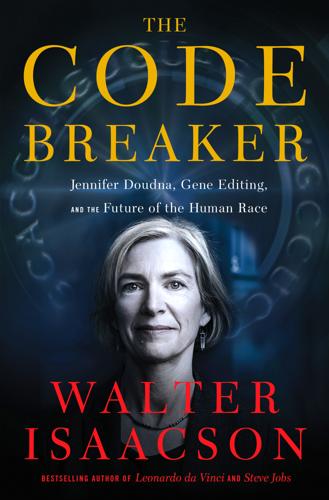
The Code Breaker: Jennifer Doudna, Gene Editing, and the Future of the Human Race
by
Walter Isaacson
Published 9 Mar 2021
“Under these circumstances, favorable variations would tend to be preserved, and unfavorable ones to be destroyed,” he wrote. “The results of this would be the formation of a new species.” Darwin was hesitant to publish his theory because it was so heretical, but competition acted as a spur, as often happens in the history of science. In 1858, Alfred Russel Wallace, a younger naturalist, sent Darwin a draft of a paper that proposed a similar theory. Darwin rushed to get a paper of his own ready for publication, and they agreed that they would present their work on the same day at an upcoming meeting of a prominent scientific society. Darwin and Wallace had a key trait that is a catalyst for creativity: they had wide-ranging interests and were able to make connections between different disciplines.
…
To take an example relevant to these days, the Japanese bacteriologist Kitasato Shibasaburō and his Swiss rival Alexandre Yersin both rushed to Hong Kong in 1894 to investigate the pneumonic plague epidemic and, working with different methods, discovered the responsible bacteria within days of each other. There was one competition in Doudna’s life that stands out for becoming heated and then bitter: the race in 2012 to show how CRISPR could edit the genes of humans. It may not be up there with Charles Darwin and Alfred Russel Wallace converging on the idea of evolution or Newton and Leibniz disputing who first figured out calculus. But it is our contemporary counterpart to the race between Pauling and the team of Watson and Crick to discover the structure of DNA. Doudna entered this competition handicapped by not having a team of collaborators who were experts in working with human cells.
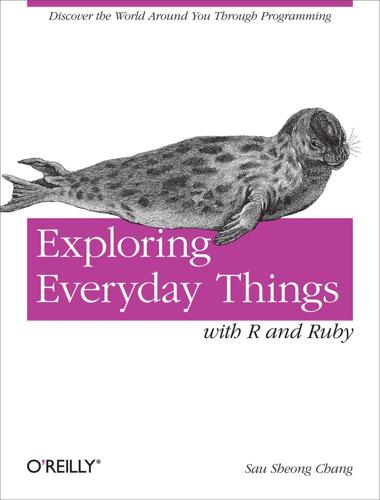
Exploring Everyday Things with R and Ruby
by
Sau Sheong Chang
Published 27 Jun 2012
Evolution Evolution is a scientific theory that most scientists have come to accept as the only possible explanation for the enormous biodiversity on Earth. It basically describes a process of change in living things over a period of time. While the idea of evolution has been around in some form or another since the time of the ancient Greeks, it’s really Charles Darwin (and independently, Alfred Russell Wallace) who came up with a scientific argument for evolution through natural selection, the familiar theory we know today. Evolution by natural selection is one of the cornerstones of modern biology. Variations occur naturally among individuals in any population of living organism, and such differences affect those individuals’ chances of survival.
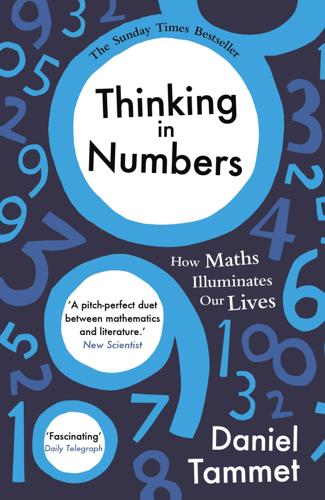
Thinking in Numbers
by
Daniel Tammet
Published 15 Aug 2012
‘All this,’ the astronomer conceded, ‘of course, may . . . signify nothing; but the probability seems the other way . . . that Mars seems to be inhabited is not the last, but the first word on the subject.’ Lowell’s claims found many sympathetic ears. ‘Probability’, he knew, was a sesame word: it opened ears and minds. But its magic did not work on everyone. The biologist Alfred Russel Wallace, who independently of Darwin discovered the principle of natural selection, was among his fiercest critics. Yes, Mars appeared to have polar icecaps, and a day only half an hour longer than our own, and lengthy seasons that vanished one into the next. But according to Wallace’s calculations, the planet was in fact too cold to have rivers, seas or canals.
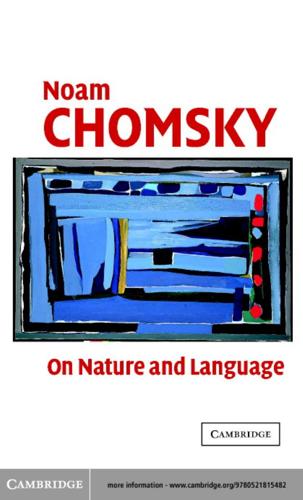
On Nature and Language
by
Noam Chomsky
Published 16 Apr 2007
The theory of evolution, not necessarily the workings of natural selection; and surely not these alone, since, trivially, they operate within a physical “channel,” the effects of which are to be discovered, not stipulated. It is also worth recalling that Darwin firmly rejected the hyperselectionism of his close associate Alfred Russell Wallace, which has been revived in some contemporary popular versions of so-called “neo-Darwinism.” Darwin repeatedly emphasized his conviction “that natural selection has been the main but not the exclusive means of modification,” taking explicit note of a range of possibilities, including non-adaptive modifications and unselected functions determined from structure, all topics that are alive in contemporary theory of evolution.
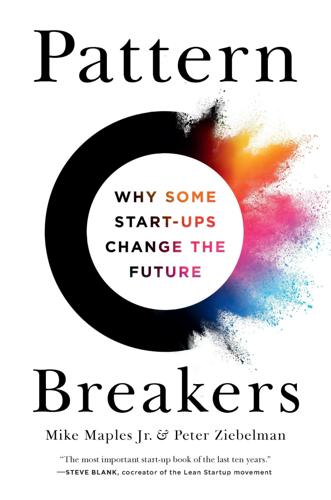
Pattern Breakers: Why Some Start-Ups Change the Future
by
Mike Maples
and
Peter Ziebelman
Published 8 Jul 2024
Charles Darwin hesitated to publish his theory of natural selection. He recognized the religious implications and how his ideas challenged prevailing beliefs about creation. He feared backlash from religious circles. Professionally and socially, he was concerned about the reactions of peers, friends, and family. His discovery that Alfred Russel Wallace had similar ideas spurred him to publish, and in 1859 Darwin’s On the Origin of Species was released. Not surprisingly, it ignited significant debate and controversy on the way to laying the foundation for modern evolutionary biology. So much around us that we accept as given today came from insights that were considered heresy in their time.

Carbon: The Book of Life
by
Paul Hawken
Published 17 Mar 2025
Michael Pollan and David Montgomery, whom I do know, belong with aforementioned writers. My deepest gratitude to Isabella Tree and Charlie Burrell for hosting me at the Knepp Estate. Their work on rewilding is nothing short of spectacular. We will look back one day and see that their brilliant, unassuming discoveries are commensurate to that of Alfred Russel Wallace and Jane Goodall. I honor Crown Princess Victoria of Sweden for her friendship and unflagging dedication to the environment and human well-being. The cover image of this book is a gift from an extraordinary photographer and friend in Chile, Chris Jordan. I have a few hundred of his images on my hard drive and each one invites and deserves a book and a cover.
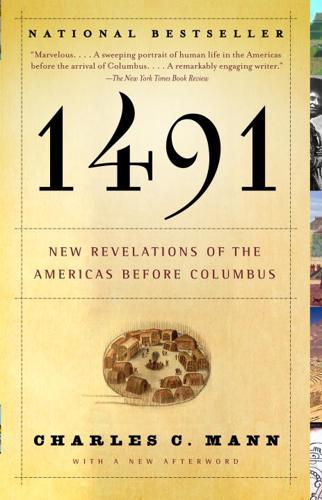
1491
by
Charles C. Mann
Published 8 Aug 2005
At about the time of Clovis almost every one of these species vanished. So complete was the disaster that most of today’s big American mammals, such as caribou, moose, and brown bear, are immigrants from Asia. The die-off happened amazingly fast, much of it in the few centuries between 11,500 and 10,900 B.C. And when it was complete, naturalist Alfred Russell Wallace wrote, the Americas had become “a zoologically impoverished world, from which all of the hugest, and fiercest, and strangest forms [had] recently disappeared.” The extinctions permanently changed American landscapes and American history. Before the Pleistocene, the Americas had three species of horse and at least two camels that might have been ridden; other mammals could have been domesticated for meat and milk.
…
During my visit I ate a sandwich atop a particularly inviting stone and looked through a stand of peach palms over the treetops to the water seven miles away. The people who created the petroglyphs, I thought, must have done about the same thing. Painted Rock Cave has attracted scientists since the mid-nineteenth century, when Alfred Russel Wallace visited it. Wallace, a naturalist, was more interested in the palm trees outside the caves than the people who had lived inside them. The latter were left to an archaeologist, Anna C. Roosevelt, then at the Field Museum. To her exasperation, press accounts of Roosevelt’s work often stress her descent from Theodore Roosevelt (she is his great-granddaughter), as if her lineage were more noteworthy than her accomplishments.
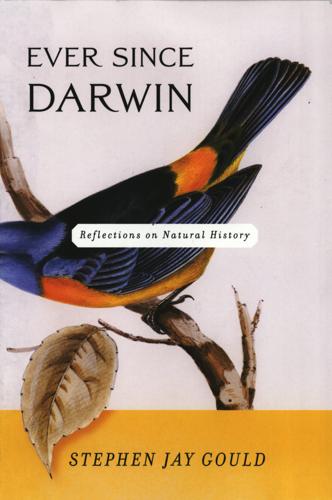
Ever Since Darwin: Reflections in Natural History
by
Stephen Jay Gould
Published 1 Jan 1977
Charles Lyell (see essay 18) envisioned a world in steady-state: no change through time in the complexity of life, with all organic designs present from the first. Yet man alone was created but a geological instant ago—a quantum jump in the moral sphere imposed upon the constancy of mere anatomical design. And Alfred Russel Wallace, an ardent selectionist who far out-Darwined Darwin in his rigid insistence on natural selection as the sole directing force for evolutionary change, made his only exception for the human brain (and turned to spiritualism late in his life). Darwin himself, although he accepted strict continuity, was reluctant to expose his heresy.
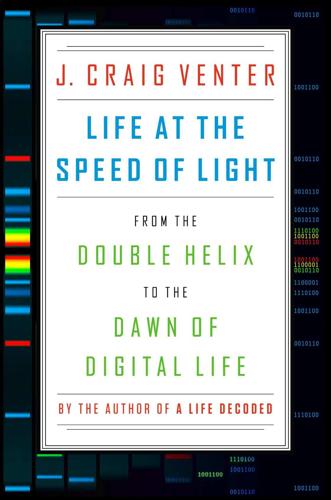
Life at the Speed of Light: From the Double Helix to the Dawn of Digital Life
by
J. Craig Venter
Published 16 Oct 2013
In 1880 the German evolutionary biologist August Weismann (1834–1914) introduced an important corollary to the Biogenic Law which pointed back to the ultimate origin: “Cells living today can trace their ancestry back to ancient times.” In other words, there must be a common ancestral cell. And that, of course, takes us to Charles Darwin’s revolutionary work, On the Origin of Species (1859). Darwin (1809–1882), along with the British naturalist and explorer Alfred Russel Wallace (1823–1913), argued that there exists within all creatures’ variations or changes in the species characteristics that are passed down through the generations. Some variations result in advantageous forms that thrive with each successive generation, so they—and their genes—become more common.
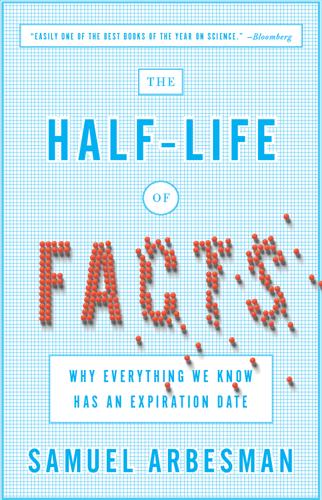
The Half-Life of Facts: Why Everything We Know Has an Expiration Date
by
Samuel Arbesman
Published 31 Aug 2012
Known as multiple independent discovery, some have occurred five or more times simultaneously and can make innovation seem nearly inevitable. Classic examples of simultaneous innovation are the telephone, for which two patents were filed on the same day, the discovery of helium, and even the theory of natural selection, which was proposed by both Charles Darwin and Alfred Russel Wallace. In some of these cases (though by no means all), there was a certain amount of delay: A discovery was simply not known by one party and ended up being duplicated, sometimes years later. If knowledge had spread widely, such a thing would not have occurred. But knowledge can be hidden for other reasons.

Rebel Ideas: The Power of Diverse Thinking
by
Matthew Syed
Published 9 Sep 2019
We argue . . . that these individuals can be seen as products of collective brains; a nexus of previously isolated ideas.34 This picture explains why innovations often occur in different minds at almost precisely the same time. For a long while, fate or providence was cited to explain why, across all of space and time, Charles Darwin and Alfred Russel Wallace came up with versions of the theory of evolution virtually in the same month. Or why Leibniz and Newton hit upon the concept of calculus almost simultaneously. Fate started to seem like a rather unsatisfactory explanation, however, when historians realised that these ‘coincidences’ are not the exception; they are the norm.
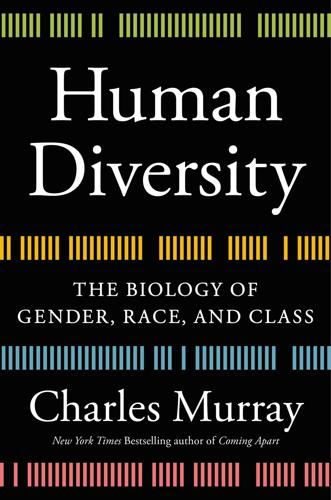
Human Diversity: The Biology of Gender, Race, and Class
by
Charles Murray
Published 28 Jan 2020
Presenting the evidence for Proposition #6 involves a number of technical issues regarding evolution, and so it’s time for another interlude. Fourth Interlude: Evolutionary Terms You Must Know to Read the Rest of the Book Evolution refers to the process whereby the first primitive forms of life became the biosphere we know today, a process independently understood in its modern form by Charles Darwin and Alfred Russel Wallace in the 1830s and 1840s and famously described in 1859 by Darwin in On the Origin of Species. Mutation. The evolution of completely new traits—hearing or eyesight, for example—requires mutations. Mutations have several causes. The chemicals that make up the base pairs can decay or be damaged.
…
You have already encountered genetic drift in chapter 6. Here are quick summaries of the other four: Natural selection. The most famous of the mechanisms for translating infusions of new genetic variations into effects on traits is the principle of natural selection, the momentous insight achieved independently by Charles Darwin and Alfred Russel Wallace. Here is the way Darwin put it in On the Origin of Species: “If variations useful to any organic being do occur, assuredly individuals thus characterized will have the best chance of being preserved in the struggle for life; and from the strong principle of inheritance they will tend to produce offspring similarly characterized.
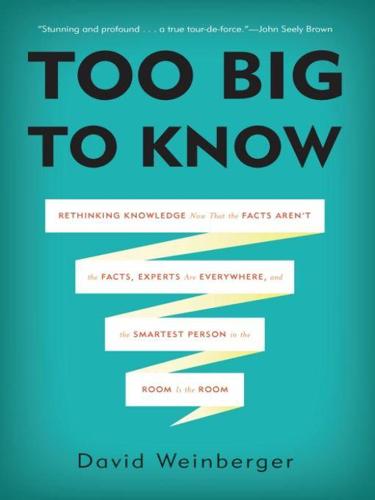
Too Big to Know: Rethinking Knowledge Now That the Facts Aren't the Facts, Experts Are Everywhere, and the Smartest Person in the Room Is the Room
by
David Weinberger
Published 14 Jul 2011
In 1844, he wrote a 189-page manuscript that he kept private, but that he instructed his wife to publish in case he died.59 In the next fifteen years, he worked on barnacles, published eight books, fathered nine children, and corresponded frequently with colleagues. He also took up experimental science—testing, for example, how long snails could stay attached to a duck’s foot, to see if that could explain their geographic distribution.60 But he did not publish his theory of evolution. Then Alfred Russel Wallace wrote him a letter. Wallace was a young naturalist who, among other adventures, had watched from a lifeboat as the ship sank that contained all his work from four years in the Amazon. In 1857, Darwin received a letter from Wallace, followed by a correspondence that resulted in Wallace sending Darwin a 20-page manuscript that laid out essentially the same theory as Darwin’s.
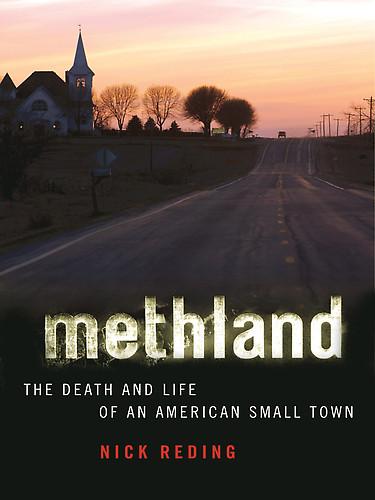
Methland: The Death and Life of an American Small Town
by
Nick Reding
Published 1 Jul 2009
Alexander Graham Bell, Gladwell points out, is credited with inventing the telephone, though Elisha Gray filed a patent for the same invention on the same day. Calculus was discovered independently by Isaac Newton and Gottfried Leibniz; the theory of evolution was formulated by Charles Darwin and Alfred Russel Wallace at approximately the same time. For Gladwell, “the sheer number of multiples could mean only one thing: discoveries must, in some sense, be inevitable.” Lori Arnold had certainly had an enormous impact on Ottumwa in her day, as well as on a good deal of the greater Midwest. But who knows how many others had spearheaded drug routes in the rest of the country—with or without the help of a superlab hidden on a horse farm.

The Drunkard's Walk: How Randomness Rules Our Lives
by
Leonard Mlodinow
Published 12 May 2008
Buckle hadn’t finished his treatise. But he did complete the initial two volumes, the first of which presented history from a statistical point of view. It was based on the work of Quételet and was an instant success. Read throughout Europe, it was translated into French, German, and Russian. Darwin read it; Alfred Russel Wallace read it; Dostoyevsky read it twice.26 Despite the book’s popularity, the verdict of history is that Quételet’s mathematics proved more sensible than his social physics. For one thing, not all that happens in society, especially in the financial realm, is governed by the normal distribution.
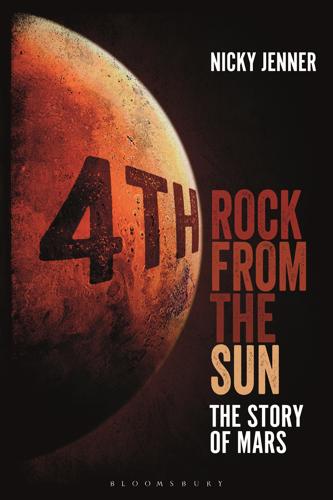
4th Rock From the Sun: The Story of Mars
by
Nicky Jenner
Published 5 Apr 2017
Regardless, Lowell gained a reputation for being a Mars expert, writing several books on the planet that described it as a cool, arid world perfectly capable of supporting advanced life. He became absolutely certain that Mars was home to beings of some sort or other, despite his contemporaries continually making new findings that suggested he might be wrong. Respected scientist Alfred Russel Wallace, for example – co-‘discoverer’ of Darwinian evolution by natural selection – argued that Martian air would be much too cold and thin for liquid water to exist, and pointed out that spectroscopic studies of Mars hadn’t managed to find any evidence of water. He was quite outspoken about his finding, exclaiming that ‘only a race of madmen would build canals under such conditions’!
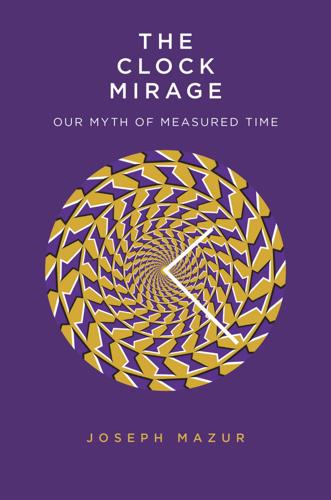
The Clock Mirage: Our Myth of Measured Time
by
Joseph Mazur
Published 20 Apr 2020
Every city and village and field will be restored, just as it was.6 This lineup is also clearly told in Plato’s dialogue Timaeus, where we are told that “there is no difficulty in seeing that the perfect number of time fulfills the perfect year [The Great Year] when all the eight revolutions, having their relative degrees of swiftness, are accomplished together and attain their completion at the same time, measured by the rotation of the same and equally moving.”7 Alfred Russel Wallace, a British explorer and an evolutionary biologist who published papers with Charles Darwin, wrote that since there was (at that time) evidence to believe the earth to be the only inhabited planet in our solar system and likely the only place in the whole universe that ended up adapting the conditions to support life, there is indication that the whole universe was “precisely adapted in every detail for the orderly development of organic life culminating in man.”8 From his writing, it is not at all clear if he is suggesting that the universe was created with some divine goal to produce life “culminating in man,” yet Mark Twain took it that way when he wrote his rebuttal quip to Wallace: Man has been here 32,000 years.
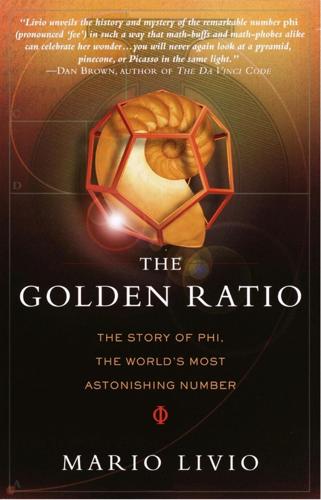
The Golden Ratio: The Story of Phi, the World's Most Astonishing Number
by
Mario Livio
Published 23 Sep 2003
That is, no more than we can explain how, in a world of chess that was used to victories by margins of half a point or so, in 1971 Bobby Fischer suddenly demolished both chess grandmasters Mark Taimanov and Bent Larsen by scores of six points to nothing on his way to the world championship. We may find it equally difficult to comprehend how naturalists Charles Darwin (1809–1882) and Alfred Russel Wallace (1823–1913) independently had the inspiration to introduce the concept of evolution itself—the idea of a descent of all life from a common ancestral origin. We must simply recognize the fact that certain individuals are head and shoulders above the rest in terms of insight. Can, however, dramatic breakthroughs like Newton's and Einstein's be accommodated at all in a scenario of evolution and natural selection?
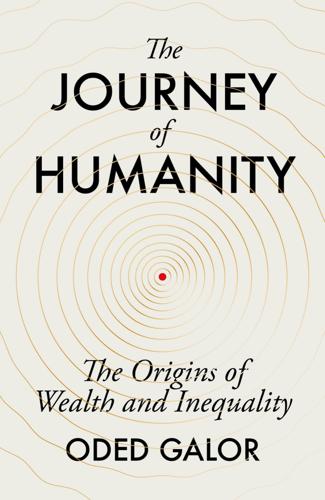
The Journey of Humanity: The Origins of Wealth and Inequality
by
Oded Galor
Published 22 Mar 2022
Some of the most prominent political economists of the period, including David Ricardo and John Stuart Mill, were profoundly swayed by his argument. Karl Marx and Friedrich Engels, on the other hand, assailed him for neglecting the role of class-ridden institutions in the prevalence of misery, while the fathers of the theory of evolution, Charles Darwin and Alfred Russel Wallace, credited his treatise with having a decisive influence on the development of their own highly influential thesis. In retrospect, Malthus’s description of the world as it existed in the past was entirely accurate. It was his pessimistic predictions about the future of humanity that turned out to be utterly mistaken.
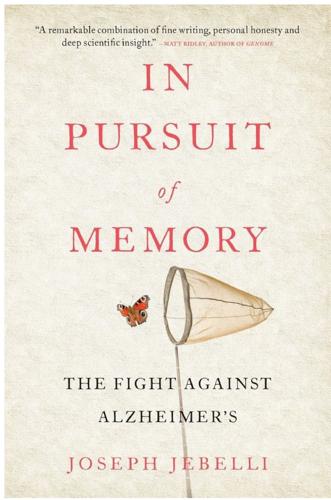
In Pursuit of Memory: The Fight Against Alzheimer's
by
Joseph Jebelli
Published 30 Oct 2017
If something doesn’t work, it’s usually the fault of the scientist. And when a tool isn’t up to the challenge, we often just wait for one that is. We push boundaries from the comfort of clearly defined lines. But Ganguli and her team scrapped all that. They were going back to basics, back to the styles of Joseph Priestley and Alfred Russel Wallace–intrepid explorers, poking in the dark for the eurekas only this approach can dispense. She mentioned a similar study, carried out in 1995, in which researchers compared Alzheimer’s prevalence between African Americans living in Indianapolis and Nigerian Africans in the city of Ibadan, Nigeria.2 The contrast was powerful for essentially neutralising genetic differences–the African Americans had migrated to America during the slave trade 200 years earlier, which is arguably not enough time for intermarriages to outweigh environmental influences.
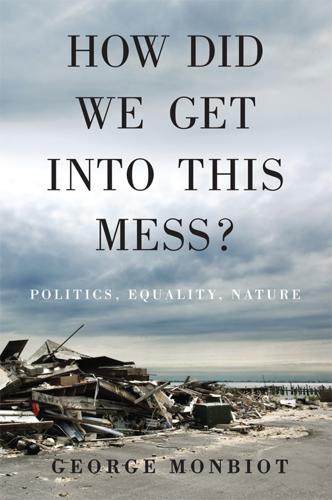
How Did We Get Into This Mess?: Politics, Equality, Nature
by
George Monbiot
Published 14 Apr 2016
In 1799, Charles White began the process of identifying Europeans as inherently superior to other peoples.11 By 1850, the disgraced anatomist Robert Knox had developed the theme into fully fledged racism.12 His book The Races of Man asserted that dark-skinned people were destined first to be enslaved and then annihilated by the ‘lighter races’. Dark meant almost everyone: ‘what a field of extermination lies before the Saxon, Celtic, and Sarmatian races!’13 Remarkable as it may sound, this view soon came to dominate British thought. In common with most of the political class, W. Winwood Reade, Alfred Russel Wallace, Herbert Spencer, Frederick Farrar, Francis Galton, Benjamin Kidd, even Charles Darwin saw the extermination of dark-skinned people as an inevitable law of nature.14 Some of them argued that Europeans had a duty to speed it up: both to save the integrity of the species and to put the inferior ‘races’ out of their misery.
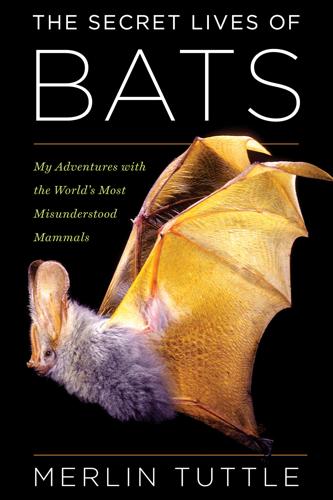
The Secret Lives of Bats
by
Merlin Tuttle
Additionally, the cave’s nectar-eating bats are the primary pollinators of durian, Thailand’s most sought-after fruit. Each bat consumes up to twice its body weight in nectar nightly and must visit many flowers to do so. The durian is considered the king of Southeast Asian fruits. It is football-sized with a knobby outer shell. The nineteenth-century British naturalist Alfred Russel Wallace described the flesh around several large seeds as like “a rich custard flavored with almonds.” Its pungent odor evokes deep appreciation among Asians, more commonly disgust among Westerners. The decline of nectar bats threatens this key crop, not to mention other Asian products, such as petai, that also rely on bats for pollination or seed dispersal.

New Dark Age: Technology and the End of the Future
by
James Bridle
Published 18 Jun 2018
In the seventeenth century, Gottfried Wilhelm Leibniz, Isaac Newton and others independently formulated the rules of calculus. In the eighteenth, the realisation of oxygen emerged almost simultaneously in the work of Carl Wilhelm Scheele, Joseph Priestley, Antoine Lavoisier, and others, while in the nineteenth, Alfred Russel Wallace and Charles Darwin both advanced the theory of evolution. Such histories give the lie to the heroic narrative of history – the lone genius toiling away to produce a unique insight. History is networked and atemporal: steam engine time is a multidimensional structure, invisible to a sensorium trapped in time, but not insensible to it.

The Hidden Half: How the World Conceals Its Secrets
by
Michael Blastland
Published 3 Apr 2019
30 ‘Life’s a Drag’, Sun, 28 August 2007. 31 As promised, we will return later to the difference between the language of luck for an individual and cause in a population. See the chapter called ‘Big is not small’. 32 This is sometimes known as the contingent theory of history. 33 Also remembering that explorer and biologist Alfred Russel Wallace was coming to similar conclusions to Darwin about evolution through natural selection. 34 For the Beatles, it was a bus. Mick Jagger and Keith Richard met on platform 2 of Dartford station. Is public transport the regularity? 35 Bruce Western and Christopher Wildeman, ‘The Black Family and Mass Incarceration’, Annals of the American Academy of Political and Social Science, vol. 621, 2009, pp. 221–242. 36 J.
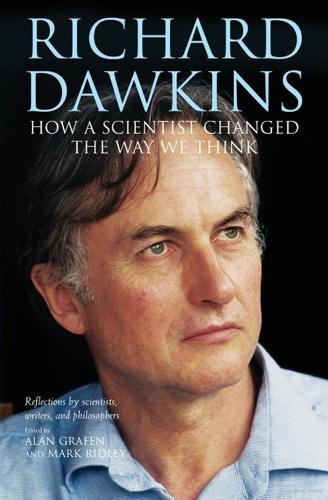
Richard Dawkins: How a Scientist Changed the Way We Think
by
Alan Grafen; Mark Ridley
Published 1 Jan 2006
Ullica Segerstråle, Professor of Sociology, Illinois Institute of Technology, Chicago, author of Defenders of the Truth, and editor of other books. Michael Shermer, founding publisher of Skeptic magazine, contributing editor of Scientific American, author of How We Believe: The Science of Good and Evil, and In Darwin’s Shadow: The Life of Alfred Russel Wallace. Kim Sterelny, Professor of Philosophy, Victoria University, Wellington, and the ANU, Canberra, author of Thought in a Hostile World: The Evolution of Human Cognition, Dawkins vs Gould: Survival of the Fittest, and other books. Margo Wilson, Professor of Psychology, McMaster University, Canada, co-author of The Truth About Cinderella and other books.

Wonderland: How Play Made the Modern World
by
Steven Johnson
Published 15 Nov 2016
Androids in the Enlightenment: Mechanics, Artisans, and Cultures of the Self. University of Chicago Press, 2013. Wallin, Nils Lennart, and Björn Merker. The Origins of Music. Cambridge, MA: MIT Press, 2001. Walsh, Claire. “Shop Design and the Display of Goods in Eighteenth-Century London.” Journal of Design History 8:3 (1995): 157–76. Weber, Thomas P. “Alfred Russel Wallace and the Antivaccination Movement in Victorian England.” Emerging Infectious Diseases 16:4 (2010): 664. Whittington, E. Michael, and Douglas E. Bradley. The Sport of Life and Death: The Mesoamerican Ballgame. London: Thames & Hudson, 2001. Winchester, Simon. Atlantic: Great Sea Battles, Heroic Discoveries, Titanic Storms, and a Vast Ocean of a Million Stories.
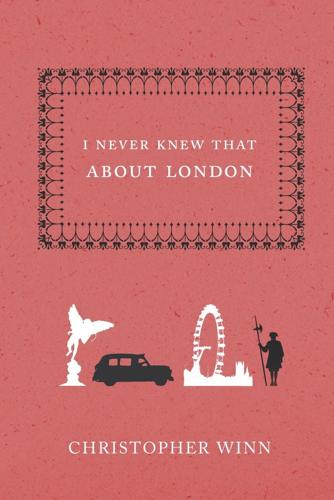
I Never Knew That About London
by
Christopher Winn
Published 3 Oct 2007
BURLINGTON HOUSE, a rare surviving grand mansion on Piccadilly, is now occupied by the ROYAL ACADEMY OF ARTS and is the site of their celebrated Summer Exhibition of work by living British artists. Five learned societies also have their homes in Burlington House: the SOCIETY OF ANTIQUARIES, the CHEMICAL SOCIETY, the GEOLOGICAL SOCIETY, the ROYAL ASTRONOMICAL SOCIETY and THE WORLD’S OLDEST EXTANT BIOLOGICAL SOCIETY, THE LINNEAN SOCIETY, where Charles Darwin and Alfred Russell Wallace first presented their joint paper on the Theory of Evolution in 1858. The smart Palladian building at No. 94 was the home of Lord Palmerston in the mid-19th century and then became the Naval and Military Club, known as the IN AND OUT after the signs painted on the gateposts. A.E.W. Mason wrote The Four Feathers sitting beneath the old plane tree in the courtyard there.
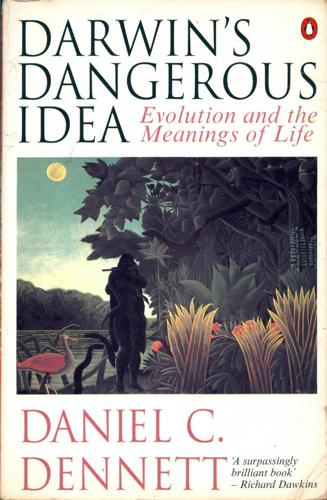
Darwin's Dangerous Idea: Evolution and the Meanings of Life
by
Daniel C. Dennett
Published 15 Jan 1995
Why should the importance or excellence of anything have to rain down on it from on high, from something more important, a gift from God? Darwin's inversion suggests that we abandon that presumption and look for sorts of excellence, of worth and purpose, that can emerge, bubbling up out of "mindless, purposeless forces." Alfred Russel Wallace, whose own version of evolution by natural selection arrived on Darwin's desk while he was still delaying publication of Origin, and whom Darwin managed to treat as codiscoverer of the principle, never quite got the point.1 Although at the outset Wallace was much more forthcoming on the subject of the evolution of the human mind than Darwin was willing to be, and stoutly maintained at first that human minds were no exception to the rule that all features of living things were products of evolution, he could not see the "strange inversion of reasoning" as the key to the greatness of the great idea.
…
A sample sentence: "In spite of all the obstacles that Teilhard perhaps wisely puts in our way, it is possible to discern a train of thought in The Phenomenon of Man" The problem with Teilhard's vision is simple. He emphatically denied the fundamental idea: that evolution is a mindless, purposeless, algorithmic process. This was no constructive compromise; this was a betrayal of the central insight that had permitted Darwin to overthrow Locke's Mind-first vision. Alfred Russel Wallace had been tempted by the same abandonment, as we saw in chapter 3, but Teilhard embraced it wholeheartedly and made it the centerpiece of his alternative vision.3 The esteem in which Teilhard's book is still held by nonscientists, the respectful tone in which his ideas are {321} alluded to, is testimony to the depth of loathing of Darwin's dangerous idea, a loathing so great that it will excuse any illogicality and tolerate any opacity in what purports to be an argument, if its bottom line promises relief from the oppressions of Darwinism.
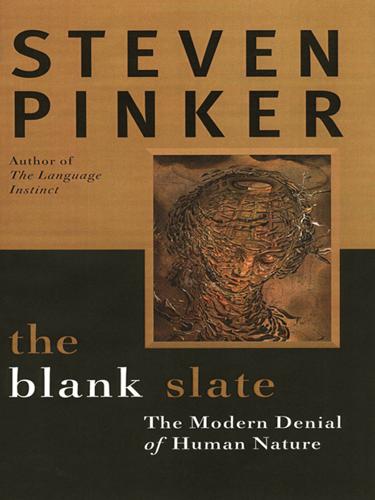
The Blank Slate: The Modern Denial of Human Nature
by
Steven Pinker
Published 1 Jan 2002
The inborn characteristics laid upon him by the biological extremists have crumbled away…. Wallace saw and saw correctly, that with the rise of man the evolution of parts was to a marked degree outmoded, that mind was now the arbiter of human destiny.51 The “Wallace” that Eiseley is referring to is Alfred Russel Wallace (1823–1913), the co-discoverer with Darwin of natural selection. Wallace parted company from Darwin by claiming that the human mind could not be explained by evolution and must have been designed by a superior intelligence. He certainly did believe that the mind of man could escape “the blind control of a deterministic world.”
…
Under the microscope, brain tissue shows a staggering complexity—a hundred billion neurons connected by a hundred trillion synapses—that is commensurate with the staggering complexity of human thought and experience. Neural network modelers have begun to show how the building blocks of mental computation, such as storing and retrieving a pattern, can be implemented in neural circuitry. And when the brain dies, the person goes out of existence. Despite concerted efforts by Alfred Russel Wallace and other Victorian scientists, it is apparently not possible to communicate with the dead. Educated people, of course, know that perception, cognition, language, and emotion are rooted in the brain. But it is still tempting to think of the brain as it was shown in old educational cartoons, as a control panel with gauges and levers operated by a user—the self, the soul, the ghost, the person, the “me.”

The rough guide to walks in London and southeast England
by
Helena Smith
and
Judith Bamber
Published 29 Dec 2008
Darwin, his wife Emma and their children lived here from 1842 until his death in 1882, and it was in this Kent retreat that he crystallized the research and learning from his extraordinary five-year journey on HMS Beagle into On the Origin of Species, published in 1859. Darwin’s theory of natural selection took twenty meticulous years to develop, the same theory flashing upon the naturalist Alfred Russel Wallace in 1858 when he lay in a fever – Wallace developed the theory in two hours, and wrote it up over the course of three evenings. Wallace sent his ideas to Darwin, who was then propelled to publish his own work, though the two men translated their rivalry into friendly support. Down House was a haven for the invalid Darwin, who avoided the rigours of a more public life for a contemplative and studious existence, supported and protected by Emma.
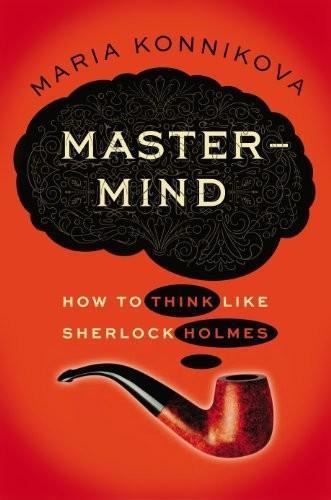
Mastermind: How to Think Like Sherlock Holmes
by
Maria Konnikova
Published 3 Jan 2013
This from the man considered the father of modern psychology. Not to mention some of the other names who filled out the ranks of the psychical community. Physiologist and comparative anatomist William B. Carpenter, whose work included influential writings on comparative neurology; the renowned astronomer and mathematician Simon Newcomb; naturalist Alfred Russel Wallace, who proposed the theory of evolution simultaneously with Charles Darwin; chemist and physicist William Crookes, discoverer of new elements and new methods for studying them; physicist Oliver Lodge, closely involved in the development of the wireless telegraph; psychologist Gustav Theodor Fechner, founder of one of the most precisely scientific areas of psychological research, psychophysics; physiologist Charles Richet, awarded the Nobel Prize for his work on anaphylaxis; and the list goes on.
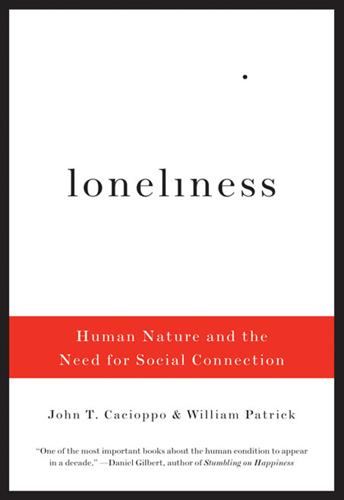
Loneliness: Human Nature and the Need for Social Connection
by
John T. Cacioppo
Published 9 Aug 2009
In other words, Darwin might never have arrived at the major structural principle in our modern scientific understanding of life had it not been for the very human problem of loneliness. In 1839 Darwin published an account of his adventures that became known as The Voyage of the Beagle. In 1859, after years of anguish about the religious and cultural implications of his ideas (and then only because a competitor, Alfred Russel Wallace, was nipping at his heels), he published his primary account of natural selection, The Origin of Species. Little more than a decade later, in 1872, he turned to the issues of human psychology in his last major work, The Expression of the Emotions in Man and Animals. But it was in his notebooks rather than in his published writings that he expressed the deeper question that remains central to our effort to understand the particular “cause at a distance” that underlies our most intimate and powerful social connections.

Beyond: Our Future in Space
by
Chris Impey
Published 12 Apr 2015
Clarke and Ray Bradbury to launch a grand tradition of Mars science fiction. In 1938, Orson Welles revisited The War of the Worlds with a radio show. His realistic live broadcast scared tens of thousands of people in the greater New York area; many raced from their homes at the prospect of a Martian invasion. Meanwhile, Alfred Russel Wallace, codiscoverer of natural selection, had rebutted Percival Lowell, insisting that a freezing Mars could never support liquid water. This argument got stronger with remote sensing in the middle of the twentieth century. Mars fever finally cooled in 1965, when Mariner 4 swooped within 10,000 kilometers of the planet’s surface and saw an arid, crater-pocked terrain with no signs of life.
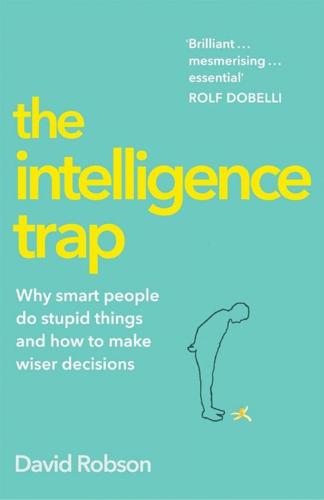
The Intelligence Trap: Revolutionise Your Thinking and Make Wiser Decisions
by
David Robson
Published 7 Mar 2019
Some commentators have wondered whether Conan Doyle was suffering from a form of madness. But let’s not forget that many of his contemporaries believed in spiritualism – including scientists such as the physicist Oliver Lodge, whose work on electromagnetism brought us the radio, and the naturalist Alfred Russel Wallace, a contemporary of Charles Darwin who had independently conceived the theory of natural selection. Both were formidable intellectual figures, but they remained blind to any evidence debunking the paranormal. We’ve already seen how our definition of intelligence could be expanded to include practical and creative reasoning.
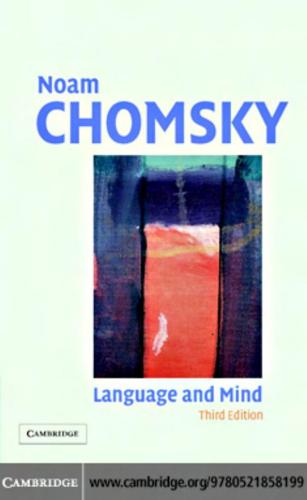
Language and Mind
by
Noam Chomsky
Published 1 Jan 1968
I will not enter into this chapter of contemporary intellectual history here, but will simply assume that crucial aspects of language can be studied as part of the natural world in the sense of the biolinguistic approach that took shape half a century ago, and has been intensively pursued since, along various different paths. The language faculty is one component of what the co-founder of modern evolutionary theory, Alfred Russel Wallace, called “man’s intellectual and moral nature” : the human capacities for creative imagination, language and 176 Language and Mind other modes of symbolism, mathematics, interpretation and recording of natural phenomena, intricate social practices and the like, a complex of capacities that seem to have crystallized fairly recently, perhaps a little over 50,000 years ago, among a small breeding group of which we are all descendants – a complex that sets humans apart rather sharply from other animals, including other hominids, judging by the archaeological record.
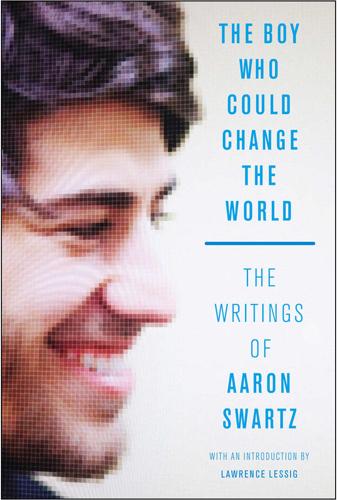
The Boy Who Could Change the World: The Writings of Aaron Swartz
by
Aaron Swartz
and
Lawrence Lessig
Published 5 Jan 2016
The real question is not what effect your work had, but what things would be like had you never done it. The two are not at all the same. It is rather commonly accepted that there are “ideas whose time has come,” and history tends to bear this out. When Newton invented the calculus, so did Leibniz. When Darwin discovered evolution through natural selection, so did Alfred Russel Wallace. When Alexander Graham Bell invented the telephone, so did Elisha Gray (before him, arguably). In these cases the facts are plain: had Newton, Darwin, and Bell never done their work, the result would have been largely the same—we’d still have calculus, evolution, and the telephone. And yet such people are hailed as major heroes, their legacies immortalized.
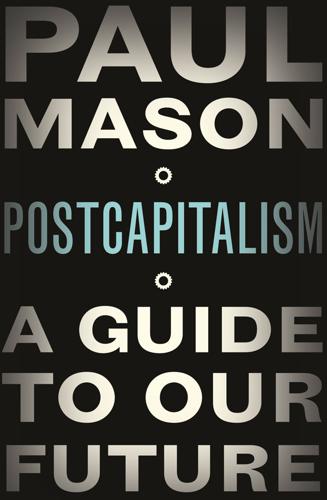
Postcapitalism: A Guide to Our Future
by
Paul Mason
Published 29 Jul 2015
Wages, prices and profits were no longer things to be investigated by social science, they were just there, to be described and counted. Ricardo was out, but all that replaced him was theoretical confusion.9 If, as a result, mid-nineteenth-century economics was reduced to ‘describing and counting’, there is a parallel with natural science. Charles Darwin formulated the theory of natural selection in 1844 and Alfred Russel Wallace three years later. Yet such were its implications – chiefly, rubbishing the Creation myth – that both men resorted to a routine of ‘collecting, naming and categorizing’ their specimens until 1858, when they both suddenly rushed to publication with an earth-shaking theory. In economics, the earth-shaking theory arrives with Marx.

This Will Make You Smarter: 150 New Scientific Concepts to Improve Your Thinking
by
John Brockman
Published 14 Feb 2012
In 1858, the German mathematician August Möbius independently discovered the Möbius strip simultaneously with another German mathematician, Johann Benedict Listing. Isaac Newton and Gottfried Wilhelm Leibniz independently developed calculus at roughly the same time. British naturalists Charles Darwin and Alfred Russel Wallace both developed the theory of evolution by natural selection independently and simultaneously. Similarly, Hungarian mathematician János Bolyai and Russian mathematician Nikolai Lobachevsky seem to have developed hyperbolic geometry independently and at the same time. The history of materials science is replete with simultaneous discoveries.

Human Compatible: Artificial Intelligence and the Problem of Control
by
Stuart Russell
Published 7 Oct 2019
Such a model would need to incorporate what is known about the reward system. 36. Ralph Adolphs and David Anderson, The Neuroscience of Emotion: A New Synthesis (Princeton University Press, 2018). 37. See, for example, Rosalind Picard, Affective Computing, 2nd ed. (MIT Press, 1998). 38. Waxing lyrical on the delights of the durian: Alfred Russel Wallace, The Malay Archipelago: The Land of the Orang-Utan, and the Bird of Paradise (Macmillan, 1869). 39. A less rosy view of the durian: Alan Davidson, The Oxford Companion to Food (Oxford University Press, 1999). Buildings have been evacuated and planes turned around in mid-flight because of the durian’s overpowering odor. 40.
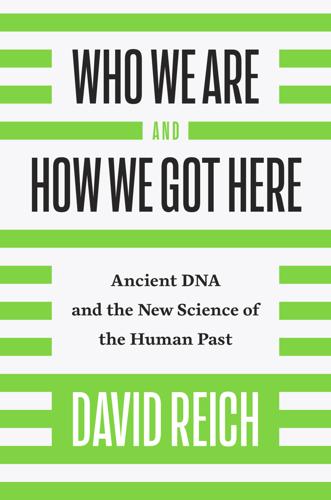
Who We Are and How We Got Here: Ancient DNA and the New Science of the Human Past
by
David Reich
Published 22 Mar 2018
We found the largest amounts of ancestry in indigenous populations in the islands off Southeast Asia and especially in the Philippines and the very large islands of New Guinea and Australia (by the word “indigenous” I refer to people who were established prior to the population movements associated with the spread of farming).11 The populations in question are largely east of Huxley’s Line, a natural boundary that separates New Guinea, Australia, and the Philippines from the western parts of Indonesia and the Asian mainland. This line was described by the nineteenth-century British naturalist Alfred Russel Wallace, and adapted by his contemporary the biologist Thomas Henry Huxley to highlight differences in the animals living on either side, for example, it roughly forms the boundary between placental mammals to the west and marsupials to the east. It corresponds to deep ocean trenches that have formed geographical barriers to the crossing of animals and plants, even in ice ages when sea levels were up to one hundred meters lower.

Rage Inside the Machine: The Prejudice of Algorithms, and How to Stop the Internet Making Bigots of Us All
by
Robert Elliott Smith
Published 26 Jun 2019
In the essay, Malthus argued that humankind’s improvement was bounded by a harsh reality: populations could only increase until they exhausted their food supplies, which resulted in poverty, and constrained the vast majority of people in a sub-perfect equilibrium of tolerable starvation. Malthus had an undeniable point, but ironically it was his idea of natural constraints and limitations that provided the necessary frame for Charles Darwin’s biological theory. Interpreting Malthus’ essay in 1858, Charles Darwin – along with biologist and naturalist Alfred Russel Wallace who was developing similar ideas thousands of miles away in the Malay Archipelago – saw the constraint on resources not as a limit on advancement, but as the actual cause of evolutionary improvement. Both Darwin and Wallace realized that all living populations bred beyond the capacity of their environment, which caused some weaker population members to die without reproducing.
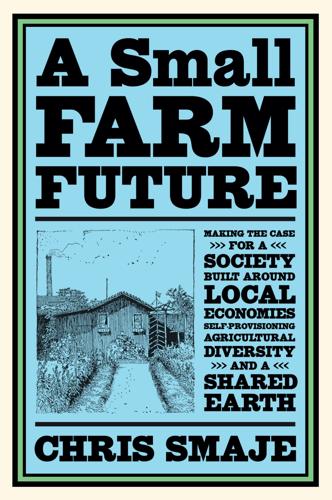
A Small Farm Future: Making the Case for a Society Built Around Local Economies, Self-Provisioning, Agricultural Diversity and a Shared Earth
by
Chris Smaje
Published 14 Aug 2020
Malthus notoriously argued that humans, especially poor ones, tended to increase their numbers through reproduction at a greater rate than they could increase food to satisfy the elevated population, prompting the checks of hunger, disease and war to fell the surfeit.10 His analysis was a key influence on Charles Darwin and Alfred Russel Wallace in their theories of evolution by natural selection. Darwin and Wallace both enjoy a secure place in the canon of history’s greatest scientists, while Malthus wallows in a slough of intellectual derision for his wrongheadedness. Why? One much-touted reason is that while the Malthusian analysis may work for wild organisms of the kind studied by Darwin and Wallace, humans are a special case.
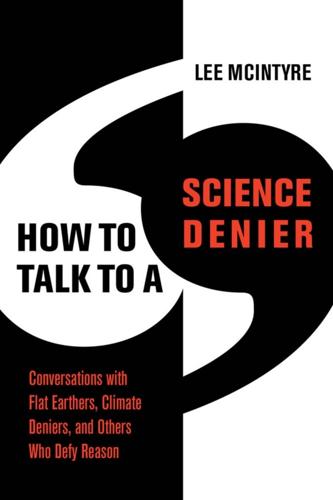
How to Talk to a Science Denier: Conversations With Flat Earthers, Climate Deniers, and Others Who Defy Reason
by
Lee McIntyre
Published 14 Sep 2021
A group of Flat Earthers go out and try to measure whether a light beam lands at the same height on three equal poles that are spaced very far apart. Based on their theory, if the light beam hit the same height on each of the poles, this would prove that there was no curvature to the Earth. Actually, this is not a bad experiment, in that it is consonant with the famous Bedford Level experiment from the nineteenth century, which Alfred Russel Wallace (of evolution fame) set up to collect prize money to “prove” the curvature of the Earth.24 So what did the Flat Earthers find? In the movie’s final frame, we see them flummoxed because they can’t get the light beam to go through the “right” hole on their apparatus. So they raise the pole. And the light goes through.
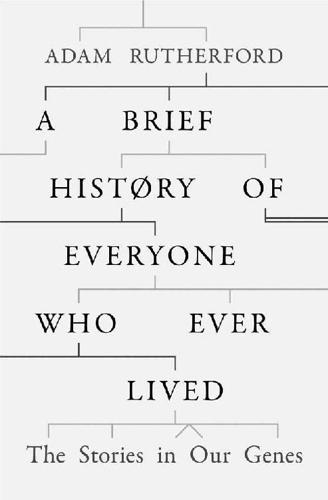
A Brief History of Everyone Who Ever Lived
by
Adam Rutherford
Published 7 Sep 2016
This deserves to be reintroduced to polite contemporary society. 14 Woolas was removed from his seat in Parliament in 2010 for allegations about an opponent during the election campaign, and was thrown out of the Labour Party. PART TWO WHO WE ARE NOW 4 The end of race ‘I think I shall avoid the whole subject as so surrounded with prejudices’ Letter from Charles Darwin to Alfred Russel Wallace, 22 December 1887 October 1981, Capel St Mary, Suffolk Iwas Leroy and my sister was Coco when I first encountered racism. We were at the Co-op supermarket in the tiny village of Capel St Mary in Suffolk, where we lived, when some boys on their bikes shouted out those names to my eight-year-old sister and me, seventeen months younger.

How the Mind Works
by
Steven Pinker
Published 1 Jan 1997
For the life of me I can’t remember what the tiny binoculars, eyedropper, and silver platter are supposed to do. A picture is worth a thousand words, but that is not always such a good thing. At some point between gazing and thinking, images must give way to ideas. 5 GOOD IDEAS “I hope you have not murdered too completely your own and my child.” So wrote Darwin to Alfred Russel Wallace, the biologist who had independently discovered natural selection. What prompted the purple prose? Darwin and Wallace were mutual admirers, so like-minded that they had been inspired by the same author (Malthus) to forge the same theory in almost the same words. What divided these comrades was the human mind.
…
Creativity consultants take millions of dollars from corporations for Dilbertesque workshops on brainstorming, lateral thinking, and flow from the right side of the brain, guaranteed to turn every manager into an Edison. Elaborate theories have been built to explain the uncanny problem-solving power of the dreamy unconscious. Like Alfred Russel Wallace, some have concluded that there can be no natural explanation. Mozart’s manuscripts were said to have no corrections. The pieces must have come from the mind of God, who had chosen to express his voice through Mozart. Unfortunately, creative people are at their most creative when writing their autobiographies.
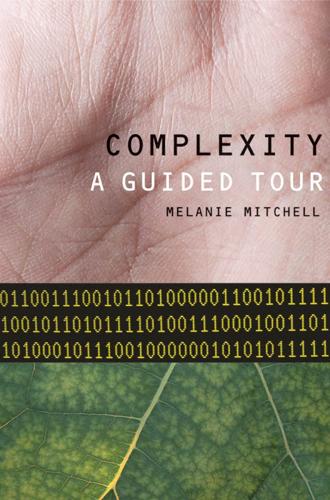
Complexity: A Guided Tour
by
Melanie Mitchell
Published 31 Mar 2009
He wrote, “Plato…says in Phaedo that our ‘necessary ideas’ arise from the preexistence of the soul, are not derivable from experience—read monkeys for preexistence.” Competition is not only the centerpiece of evolution, but is also a great motivator in science itself. Darwin’s hesitation to publish his work quickly melted away when he discovered that he was about to be scooped. In 1858, Darwin received a manuscript from another English naturalist, Alfred Russell Wallace, entitled On the Tendency of Varieties to Depart Indefinitely from the Original Type. Darwin was alarmed to find that Wallace had independently come up with the same basic ideas of evolution by natural selection. Darwin expressed his dismay in a letter to Lyell: “[A]ll my originality, whatever it may amount to, will be smashed.”
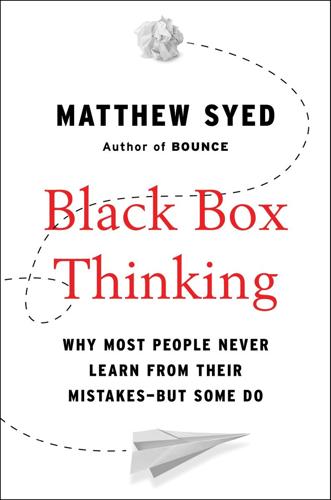
Black Box Thinking: Why Most People Never Learn From Their Mistakes--But Some Do
by
Matthew Syed
Published 3 Nov 2015
The forerunner to the first electric battery was invented by Ewald Georg von Kleist in 1745 and Andreas Cuneus of Leyden in 1746. Four people independently proposed the law of the conservation of energy in the 1840s. The theory of evolution through natural selection was proposed independently by Charles Darwin and Alfred Russel Wallace (an extraordinary, unsung polymath) in the mid-nineteenth century.11 S. Korschinsky in 1889 and Hugo de Vries in 1901 independently established the significance of genetic mutation. Even Einstein’s pioneering work has echoes in the work of his contemporaries. The French mathematician Henri Poincaré wrote about the “Principle of Relativity” in 1904, a year before Einstein published his landmark paper on the Special Theory.

The Evolution of Everything: How New Ideas Emerge
by
Matt Ridley
Some of them even involve design: the many different breeds of pigeons that Darwin so admired, from tumblers to fantails, were all produced by ‘mind-first’ selective breeding, just like natural selection but at least semi-deliberate and intentional. Darwin’s reliance on pigeon breeding to tell the tale of natural selection was fraught with danger – for his analogy was indeed a form of intelligent design. Wallace’s swerve Again and again, Darwin’s followers would go only so far, before swerving. Alfred Russel Wallace, for instance, co-discovered natural selection and was in many ways an even more radical enthusiast for Darwinism (a word he coined) than Darwin himself. Wallace was not afraid to include human beings within natural selection very early on; and he was almost alone in defending natural selection as the main mechanism of evolution in the 1880s, when it was sharply out of fashion.
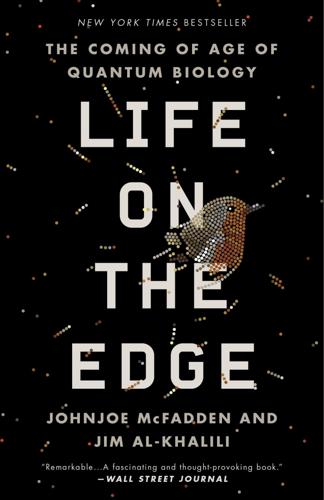
Life on the Edge: The Coming of Age of Quantum Biology
by
Johnjoe McFadden
and
Jim Al-Khalili
Published 14 Oct 2014
*2 Organisms that live in extreme (from our perspective) environments. *3 Cancers are caused by mutations in genes that control cell growth, leading to uncontrolled cell growth and thereby tumors. *4 Of course, it could as easily be called Wallace’s theory of natural selection, after the great British naturalist and geographer Alfred Russel Wallace who, during a bout of malarial fever while traveling in the tropics, came up with virtually the same idea as Darwin. *5 The term “genetics” was coined in 1905 by William Bateson, an English geneticist and a proponent of Mendel’s ideas; the term “gene” was suggested four years later by Danish botanist Wilhelm Johannsen to distinguish between the outward appearance of an individual (its phenotype) and its genes (its genotype)
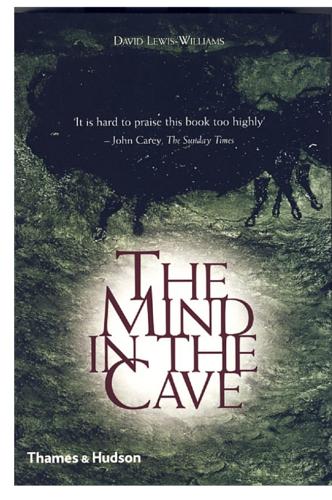
The Mind in the Cave: Consciousness and the Origins of Art
by
David Lewis-Williams
Published 16 Apr 2004
At the beginning of his work, he was as prejudiced against evolutionary ideas as they, but something in his make-up, some hard-to-define ‘genius in science’, allowed him to see connections that escaped the meticulous inspection of others.4 Then came a decisive moment. On 18 June 1858, Darwin received an essay from Alfred Russel Wallace (1823–1913), a naturalist who was then 12,000 miles away in the Moluccas Islands. Wallace’s essay was entitled On the Tendencies of Varieties to Depart Indefinitely from the Original Type. Darwin’s previous correspondence with Wallace had not prepared him for the content of the article. For Darwin, it was ‘a bolt from the blue’.

Your Face Belongs to Us: A Secretive Startup's Quest to End Privacy as We Know It
by
Kashmir Hill
Published 19 Sep 2023
GO TO NOTE REFERENCE IN TEXT Charles Darwin wrote: Charles Darwin to Francis Galton, December 23, 1869, Darwin Correspondence Project, University of Cambridge, https://www.darwinproject.ac.uk/letter/DCP-LETT-7032.xml. GO TO NOTE REFERENCE IN TEXT Reviews of the book were mixed: Alfred Russel Wallace, review of Hereditary Genius, Nature, March 17, 1870. See also Emel Aileen Gökyiḡit, “The Reception of Francis Galton’s ‘Hereditary Genius’ in the Victorian Periodical Press,” Journal of the History of Biology 27, no. 2 (1994): 215–40. GO TO NOTE REFERENCE IN TEXT Bertillon was tall and haughty: The descriptions of Bertillon in this section come from several sources: Richard Farebrother and Julian Champkin, “Alphonse Bertillon and the Measure of Man: More Expert than Sherlock Holmes,” Significance 11, no. 2 (2014); Ida M.
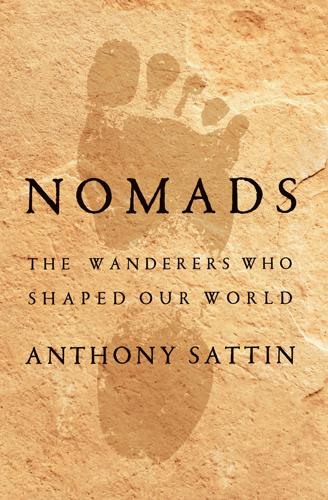
Nomads: The Wanderers Who Shaped Our World
by
Anthony Sattin
Published 25 May 2022
The Maories are passing away at the rate of about twenty-five per cent every fourteen years, and in Australia, as in America, whole tribes have disappeared before the advance of the white man.59 Another member of the society predicted that black Africans would all die because ‘the weak must be devoured by the strong’.60 When Charles Darwin read his colleague and rival evolutionist Alfred Russel Wallace’s book The Origin of Human Races, he underlined one particularly salient passage. It is where Wallace claims that the strong must devour the weak if human society is to advance, a form of blood sacrifice, if you like, by which the human stock is strengthened and perfected. This idea was echoed thirty years later in a speech given by Lord Salisbury, the British prime minister, in which he stated that ‘one can roughly divide the nations of the world into the living and the dying’.61 Nomads were among the dying.

What Technology Wants
by
Kevin Kelly
Published 14 Jul 2010
And finally, this naturally emergent autonomy in technological systems also creates a suite of “wants.” By following the long-term trends in evolution we can show what technology wants. 7 Convergence In 2009, the world celebrated the 200th birthday of Charles Darwin and honored his theory’s impact upon our science and culture. Overlooked in the celebrations was Alfred Russel Wallace, who came up with the same theory of evolution, at approximately the same time, 150 years ago. Weirdly, both Wallace and Darwin found the theory of natural selection after reading the same book on population growth by Thomas Malthus. Darwin did not publish his revelation until provoked by Wallace’s parallel discovery.
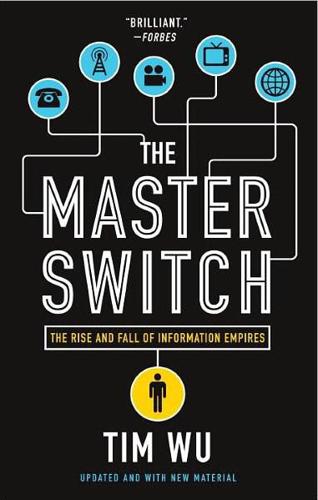
The Master Switch: The Rise and Fall of Information Empires
by
Tim Wu
Published 2 Nov 2010
In this sense, inventors are often more like craftsmen than miracle workers. Indeed, the history of science is full of examples of what the writer Malcolm Gladwell terms “simultaneous discovery”—so full that the phenomenon represents the norm rather than the exception. Few today know the name Alfred Russel Wallace, yet he wrote an article proposing the theory of natural selection in 1858, a year before Charles Darwin published The Origin of Species. Leibnitz and Newton developed calculus simultaneously. And in 1610 four others made the same lunar observations as Galileo.4 Is the loner and outsider inventor, then, merely a figment of so much hype, with no particular significance?
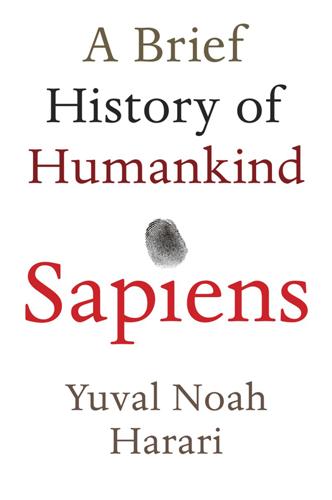
Sapiens: A Brief History of Humankind
by
Yuval Noah Harari
Published 1 Jan 2011
If these particular geniuses had never been born, their insights would probably have occurred to others. But if the proper funding were unavailable, no intellectual brilliance could have compensated for that. If Darwin had never been born, for example, we’d today attribute the theory of evolution to Alfred Russel Wallace, who came up with the idea of evolution via natural selection independently of Darwin and just a few years later. But if the European powers had not financed geographical, zoological and botanical research around the world, neither Darwin nor Wallace would have had the necessary empirical data to develop the theory of evolution.
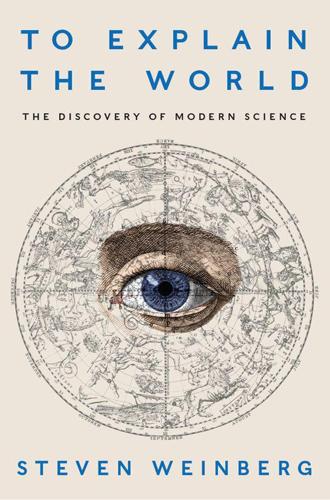
To Explain the World: The Discovery of Modern Science
by
Steven Weinberg
Published 17 Feb 2015
Even if we can avoid a supernatural explanation of the capabilities of plants and animals, it long seemed inevitable that an understanding of life would rest on teleological principles very different from those of physical theories like Newton’s. The unification of biology with the rest of science first began to be possible in the mid-nineteenth century, with the independent proposals by Charles Darwin and Alfred Russel Wallace of the theory of evolution through natural selection. Evolution was already a familiar idea, suggested by the fossil record. Many of those who accepted the reality of evolution explained it as a result of a fundamental principle of biology, an inherent tendency of living things to improve, a principle that would have ruled out any unification of biology with physical science.
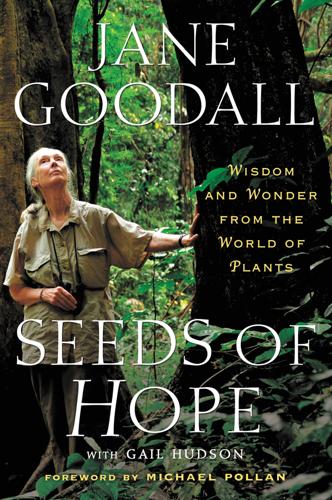
Seeds of Hope: Wisdom and Wonder From the World of Plants
by
Jane Goodall
Published 1 Apr 2013
“Peru and Bolivia tried to retain their monopoly” Kavita Philip, “Imperial Science Rescues a Tree: Global Botanic Networks, Local Knowledge and the Transcontinental Transplantation of Cinchona,” Environment and History 1 (June 1995): 173–200. 18. “get some seeds and plants of a cinchona” Richard Spruce, Notes of a Botanist on the Amazon & Andes, ed. Alfred Russel Wallace (New York: Macmillan), accessed July 9, 2013, http://ia700302.us.archive.org/10/items/notesofbotanisto00spruuoft/notesofbotanisto00spruuoft.pdf. 19. “They grew readily, and cinchona soon became” “A Short History of Cinchona,” Kew Royal Botanic Gardens, accessed July 9, 2013, http://www.kew.org/collections/ecbot/collections/topic/cinchona/a-short-history-of-cinchona/. 20.
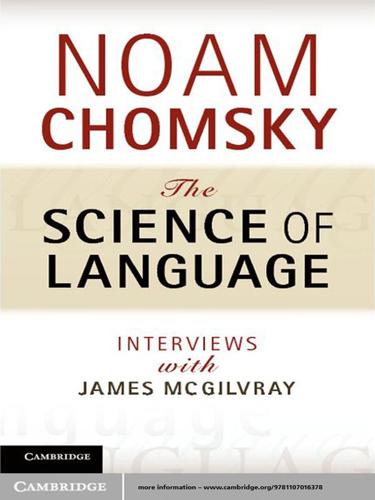
The Science of Language
by
Noam Chomsky
Published 24 Feb 2012
In that vein, you've sometimes speculated, suggested – I'm not sure what the right word is – that along with Merge come the natural numbers, comes some successor function. Merge in the limiting case where you simply join one element to itself might effectively lead to the successor function. NC: This is an old problem. Alfred Russell Wallace was worried about it. He recognized that mathematical capacities could not have developed by natural selection; it's impossible, because everybody's got them, and nobody's ever used them, except for some very tiny fringe of people in very recent times. Plainly, they developed some other way.
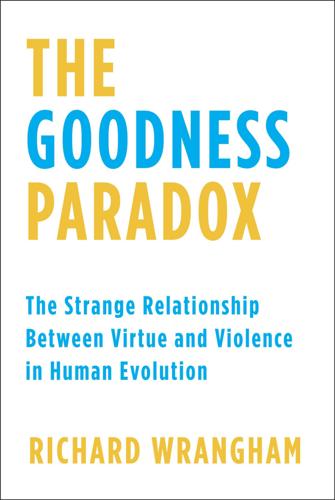
The Goodness Paradox: The Strange Relationship Between Virtue and Violence in Human Evolution
by
Richard Wrangham
Published 29 Jan 2019
They were big names of the day: Auguste Comte, George Crile, Charles Darwin, William James, Vernon Kellogg, Ray Lankester, Henry Marshall, William McDougall, Peter Chalmers Mitchell, Lloyd Morgan, G. T. W. Patrick, Ronald Ross, Charles Sherrington, Herbert Spencer, J. Arthur Thomson, Wilfred Trotter, Alfred Russell Wallace, Graham Wallas, and Lester Ward. The only hard-line “biological determinist” was the neurobiologist Karl Pearson, who was also a eugenicist. Overall, the accusations had barely any truth.17 Abundant evidence shows that violence is socially influenced and socially preventable. History, after all, has long told us that societies can be at peace for generations.
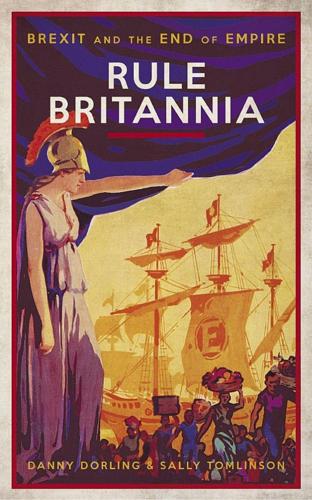
Rule Britannia: Brexit and the End of Empire
by
Danny Dorling
and
Sally Tomlinson
Published 15 Jan 2019
He thought the practice subverted natural selection of the fittest person to cultivate the land. As he once memorably said, ‘Primogeniture is dreadfully opposed to natural selection; suppose the first-born bull was made by each farmer the begetter of his stock.’12 Unlike his far more enlightened contemporary, Alfred Russel Wallace, Darwin didn’t worry as much about the cows as the bulls. Wallace not only contributed as much as Darwin to the theory of evolution, but was also a very early feminist. But because he was not a wealthy man many of his ideas were ignored.13 Victorian notions of British superiority hampered the rate at which the British learnt and adapted, and helped bring about the end of empire.
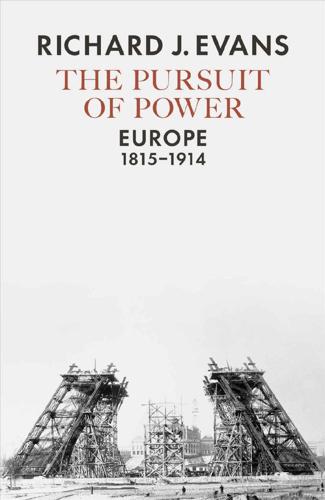
The Pursuit of Power: Europe, 1815-1914
by
Richard J. Evans
Published 31 Aug 2016
Wells (1866–1946) went even further, depicting in his novel The War of the Worlds, published in serial form the same year, the invasion of Earth by a fleet of advanced ‘fighting machines’ on stilts, manned by cephalopodic Martians, who obliterate everything in their path with their heat rays and black smoke until they fall victim to mundane bacterial infections and die. Writers of the new genre of science fiction continued to describe civilizations on Mars or even the Moon, as in Wells’s The First Men in the Moon (1901), despite warnings from the English naturalist Alfred Russel Wallace (1823–1913) that both bodies were too cold for life to exist on them. Another schoolteacher, the Russian mathematician Konstantin Eduardovich Tsiolkovsky (1857–1935), in his little-read work The Exploration of Cosmic Space by Means of Reaction Devices (1903) worked out the mathematical equation that laid down the principles on which a rocket would be able to escape the gravitational pull of the Earth, though it was to be many years before it was put into practice.
…
It asserted that man was simply one kind of animal, ‘considered zoologically, and without regard to the distinct character assigned to him by theology’. The naturalist Charles Darwin issued an even more profound challenge to Christian belief. Darwin had collected fossils and observed the variety of species on the Galapagos Islands during his voyage on the Beagle from 1831 to 1836. Another naturalist, Alfred Russel Wallace, had independently come to similar conclusions, and in 1859, to forestall him, Darwin published his celebrated book On the Origin of Species. It opened with the boldest possible statement, that ‘the view, which most naturalists until recently entertained, and which I formerly entertained – that each species has been independently created – is erroneous’.

The State and the Stork: The Population Debate and Policy Making in US History
by
Derek S. Hoff
Published 30 May 2012
Wolfe.148 In scholarly collections such as Louis Dublin’s Population Problems (1926) as well as in more popular forums, Wolfe demanded that public policy seek the optimum population, rather than merely prevent “absolute overpopulation,” through measures “which will secure such adjustment between population and natural resources as will enable us to live as well as possible.”149 Operating from the Malthusian scarcity perspective, Wolfe rejected the assumptions of those he deemed “anti-Malthusian optimists” that migration and invention held the dual keys to avoiding the Malthusian squeeze.150 On the question of migration, Wolfe joined the end-of-frontier chorus and suggested, “Only inferior lands, limited in extent, remain for settlement.”151 Much more original, during a decade of unbridled optimism about the benefits of technology, was Wolfe’s insistence on the limits of technical innovation. He wrote, “Progress itself involves a paradox, for . . . it is inconceivable that technical advance can maintain the pace it set in what [naturalist Alfred Russel] Wallace called ‘the wonderful century’ and which [John Maynard] Keynes thinks may prove to have been ‘a magnificent episode’ in history. In the main, future improvements are to be ‘looked for in the fourth decimal place.’ There was a ‘pace that killed Athens.’ ”152 In assuming that a rising population produces economic benefits to a certain point, and that this point varies across societies and may shift with social and technological advancement, optimum theory rejected dire Malthusianism.

Model Thinker: What You Need to Know to Make Data Work for You
by
Scott E. Page
Published 27 Nov 2018
Any number of people might have made these innovations given the ideas swirling around in the community of thinkers. The simultaneity of major discoveries—calculus (Isaac Newton and Gottfried Leibniz), the telephone (Alexander Graham Bell and Elisha Gray), and the natural selection theory of evolution (Charles Darwin and Alfred Russel Wallace)—supports that inference. In sum, many-model thinking shows advantages and disadvantages to patents. The deeper, more nuanced understanding the models provide argues for a more flexible patent policy. Perhaps some ideas—those that many people might have discovered and those that could recombine with other ideas—should have different lengths or types of patents, or even not be patentable at all. 29.
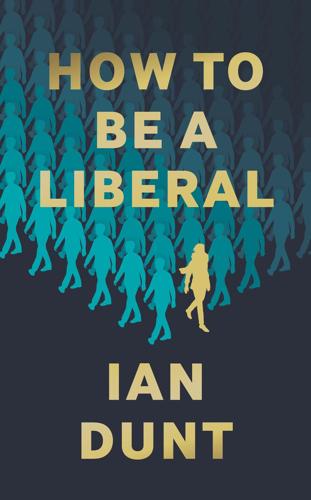
How to Be a Liberal: The Story of Liberalism and the Fight for Its Life
by
Ian Dunt
Published 15 Oct 2020
They did not know as they were writing, but in the same year that On Liberty was published, Charles Darwin would finally release his book outlining the theory of evolution, On the Origin of Species, after 20 years of nervous delay. It would be the most explosive assault on the religious account of existence since Galileo and a perfect demonstration of their argument. Had Darwin – or Alfred Russel Wallace, who came to the theory at the same time – been more afraid of ridicule, the world might have been denied the truth they’d discovered. Running against popular opinion could be lonely and dangerous. Anyone who truly thought independently risked losing friends, social respect and even career advancement, but this was the duty of being a truly free individual.
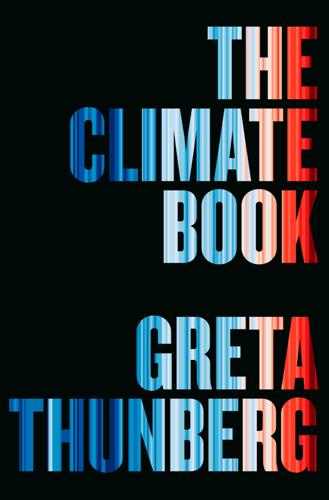
The Climate Book: The Facts and the Solutions
by
Greta Thunberg
Published 14 Feb 2023
The loss of so many large species in such a (geologically speaking) short amount of time was so dramatic it was noted back in Darwin’s day. ‘We live in a zoologically impoverished world, from which all the hugest, and fiercest, and strangest forms have recently disappeared,’ Darwin’s rival Alfred Russel Wallace observed in 1876. Scientists have been debating the cause of the so-called megafauna extinction ever since. It’s now known that the extinction took place at different times on different continents, and that the order in which species became extinct corresponds to that in which human settlers showed up.
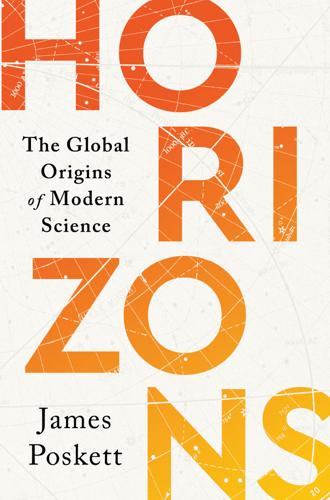
Horizons: The Global Origins of Modern Science
by
James Poskett
Published 22 Mar 2022
The Russian Herald, a new liberal magazine published in Moscow, described On the Origin of Species as ‘one of the most brilliant books ever to be written in the natural sciences’, whilst the secretary of the Saint Petersburg Society of Naturalists noted that ‘almost all leading contemporary biologists are followers of Darwin’. On the Origin of Species quickly appeared in a Russian translation in 1864, as did many other works by leading British evolutionary thinkers. Thomas Henry Huxley’s Evidence as to Man’s Plan in Nature (1863) was translated into Russian, as was Alfred Russel Wallace’s Contributions to the Theory of Natural Selection (1870). Evolution also seeped into Russian literary culture. Leo Tolstoy’s Anna Karenina (1878) even featured a passage in which one of the characters starts explaining the ‘struggle for existence’ and ‘natural selection’ to Anna herself. Russia’s other great nineteenth-century novelist, Fyodor Dostoevsky, was similarly enthusiastic about Darwin, going as far as to describe the British naturalist as ‘the leader of European progressive thought’.

Adaptive Markets: Financial Evolution at the Speed of Thought
by
Andrew W. Lo
Published 3 Apr 2017
It’s no surprise, then, that economic behavior is often best viewed through the lens of biology. The connections between evolution and economics are not new. Economics may have even inspired evolutionary theory. The British economist Thomas Malthus deeply influenced both Charles Darwin and Darwin’s close competitor, Alfred Russell Wallace.8 Malthus forecast that human population growth would increase exponentially, while food supplies would increase only along a straight line. He concluded that the human race was doomed to eventual starvation and possible extinction. No wonder economics became known as the “dismal science.”
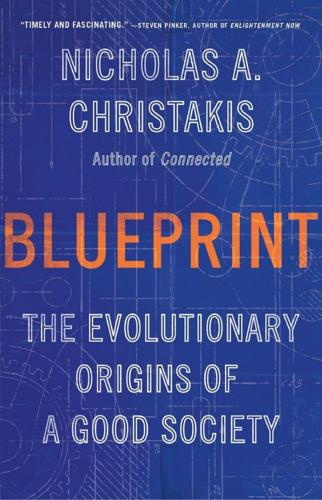
Blueprint: The Evolutionary Origins of a Good Society
by
Nicholas A. Christakis
Published 26 Mar 2019
Certain species of ants have the misfortune of being prone to infection by a particular species of fungus (Ophiocordyceps unilateralis); the fungus prompts them to climb a plant to a certain height and then bite into a vein on the underside of a leaf in a death grip.27 The fungus then kills the ant and grows a large mushroom-type stalk from the ant’s head from which its spores can rain down on future ants (as shown in color plate 8). This phenomenon was first observed by Alfred Russel Wallace, a naturalist who advanced a theory of natural selection at the same time as Darwin but who received much less recognition for his efforts. Here, we have an example of a species without a nervous system (the fungus) evolving to control the behavior of the species with a nervous system (the ant), converting the latter into a spore-delivery platform.
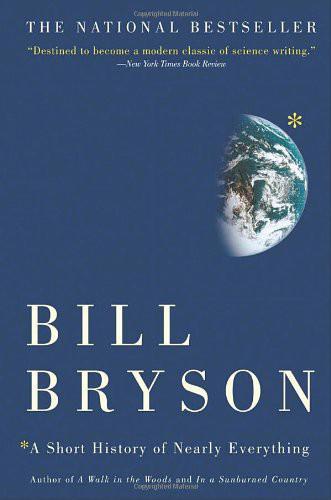
A Short History of Nearly Everything
by
Bill Bryson
Published 5 May 2003
Huxley, a believer in evolution, attacked the book with some venom, unaware that the author was a friend.*42 Darwin's manuscript might have remained locked away till his death but for an alarming blow that arrived from the Far East in the early summer of 1858 in the form of a packet containing a friendly letter from a young naturalist named Alfred Russel Wallace and the draft of a paper, On the Tendency of Varieties to Depart Indefinitely from the Original Type, outlining a theory of natural selection that was uncannily similar to Darwin's secret jottings. Even some of the phrasing echoed Darwin's own. “I never saw a more striking coincidence,” Darwin reflected in dismay.
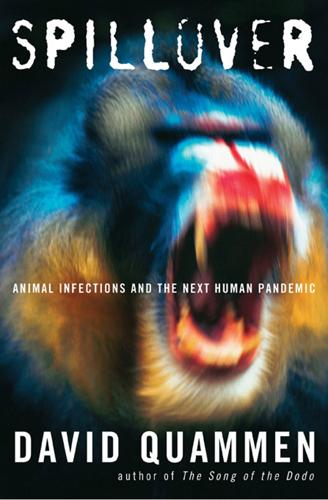
Spillover: Animal Infections and the Next Human Pandemic
by
David Quammen
Published 30 Sep 2012
Then in 1999, offered a chance to do research under the auspices of a new medical school, they relocated to Sarawak, one of Malaysia’s two Borneo states, establishing their lab within the University of Malaysia Sarawak, in Kuching, an exotic old city on the Sarawak River. Rajah Brooke had a palace there in the mid-nineteenth century. Alfred Russel Wallace passed through. It’s a charming place if you want little backstreet hotels and riverboat commerce and Bornean jungle out your back door. Kuching means “cat,” hence the nickname “Cat City,” and at the gateway to its Chinatown sits a huge concrete feline. Singh and Cox-Singh, though, didn’t choose it for local color.
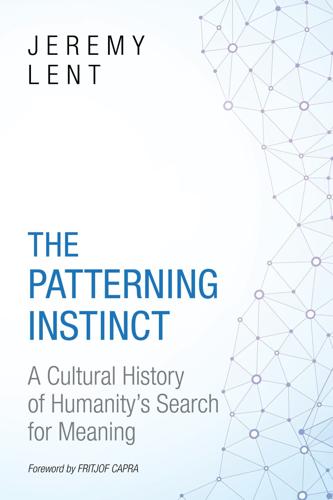
The Patterning Instinct: A Cultural History of Humanity's Search for Meaning
by
Jeremy Lent
Published 22 May 2017
For the whole world works together in the service of man; and there is nothing from which he does not derive use and fruit…insomuch that all things seem to be going about man's business and not their own.13 Even after Charles Darwin undermined Christian certainties with the theory of evolution, the view of humankind as the apex of nature maintained its hold on the Western mind, transforming from a Christian to an evolutionary doctrine. Darwin's contemporary Alfred Russel Wallace, for example, concluded that evolution had been working “for untold millions of years…slowly developing forms of life and beauty to culminate in man.” This idea took hold. Prominent paleontologist Robert Broom expressed a typical opinion in 1933 that “much of evolution looks as if it had been planned to result in man, and in other animals and plants to make the world a suitable place for him to dwell in.”14 Recovering Dominion Along with the DOMINION OVER NATURE God had granted humankind, a parallel metaphor viewed man as the STEWARD OF NATURE, with an implied duty of care.

Southeast Asia on a Shoestring Travel Guide
by
Lonely Planet
Published 30 May 2012
Getting There & Away Lion Air (www.lionair.co.id) has daily flights from Manado (40 minutes) and Makassar (90 minutes). The main bus terminal is 3km north of town. There are direct buses to Manado (from 80,000Rp, 10 hours); minibuses are more comfortable and cost 150,000Rp. Manado 0431 / POP 485,000 Once described by anthropologist Alfred Russel Wallace as ‘one of the prettiest [cities] in the East’, Manado has sold its soul to commerce. However, it remains a necessary base for exploring North Sulawesi. Along Jl Sam Ratulangi, the main north–south artery, you’ll find restaurants, hotels and supermarkets. The shopping-mall blitz dominates parallel Jl Piere Tendean (aka ‘The Boulevard’) closer to the waterfront, which is one vast construction site – though even the new sidewalks are perilous!
…
From the low-lying coastal areas, the country rises through no fewer than 129 active volcanoes – more than any country in the world – to the snow-covered summit of Puncak Jaya (4884m) in Papua. Despite the incredible diversity of its landscapes, it is worth remembering that Indonesia is predominantly water; Indonesians refer to the country as Tanah Air Kita (literally ‘Our Earth and Water’). Wildlife In his classic study, The Malay Archipelago, British naturalist Alfred Russel Wallace divided Indonesia into two zones. To the west of the so-called Wallace Line (which runs between Kalimantan and Sulawesi and south through the straits between Bali and Lombok) the flora and fauna resemble that of the rest of Asia, while the species and environments to the east become increasingly like those of Australia.
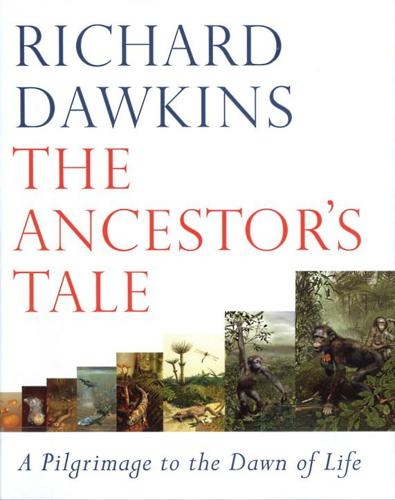
The Ancestor's Tale: A Pilgrimage to the Dawn of Evolution
by
Richard Dawkins
Published 1 Jan 2004
.* Nakedness in men was dragged along in the evolutionary wake of nakedness in women, but never quite caught up, which is why men remain hairier than women. For Darwin, the preferences that drove sexual selection were taken for granted -- given. Men just prefer smooth women, and that's that. Alfred Russel Wallace, the co-discoverer of natural selection, hated the arbitrariness of Darwinian sexual selection. He wanted females to choose males not by whim but on merit. He wanted the bright feathers of peacocks and birds of paradise to be tokens of underlying fitness. For Darwin, peahens choose peacocks simply because, in their eyes, they are pretty.

Enlightenment Now: The Case for Reason, Science, Humanism, and Progress
by
Steven Pinker
Published 13 Feb 2018
Even the fleshy outer ear—asymmetrical top to bottom and front to back, and crinkled with ridges and valleys—is shaped in a way that sculpts the incoming sound to inform the brain whether the soundmaker is above or below, in front or behind. Organisms are replete with improbable configurations of flesh like eyes, ears, hearts, and stomachs which cry out for an explanation. Before Charles Darwin and Alfred Russel Wallace provided one in 1859, it was reasonable to think they were the handiwork of a divine designer—one of the reasons, I suspect, that so many Enlightenment thinkers were deists rather than outright atheists. Darwin and Wallace made the designer unnecessary. Once self-organizing processes of physics and chemistry gave rise to a configuration of matter that could replicate itself, the copies would make copies, which would make copies of the copies, and so on, in an exponential explosion.
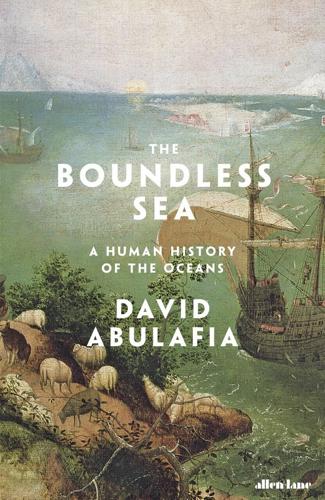
The Boundless Sea: A Human History of the Oceans
by
David Abulafia
Published 2 Oct 2019
After a team from Pennsylvania declared that there was nothing on the site that was really ancient, further investigation turned up Tang pottery and demonstrated that there were wharves and warehouses all along the northern bank of the river on which Palembang stood, the River Musi. These installations stretched across a distance of twelve kilometres. The archaeologist John Miksic has pointed out how similar this long, narrow town of wharves is to the extraordinary town described in the nineteenth century by the great naturalist Alfred Russel Wallace. What he found at Palembang was a ‘city’ about half as long as the medieval evidence suggests, but one that consisted simply of a strip along the river bank; the houses stood on stilts above the River Musi, and Zhao Rugua had already pointed out that everyone in Śri Vijaya lived either ‘scattered about outside the city, or on the water on rafts of boards covered over with reeds’, which enabled them to claim exemption from government taxes.31 In the nineteenth century, only the sultan and a couple of his chief advisers lived on land, on low hills close to the river.

Rationality: From AI to Zombies
by
Eliezer Yudkowsky
Published 11 Mar 2015
If you’ve been victimized by creationist disinformation—that is, if you’ve heard any suggestion that evolutionary theory is controversial or untestable or “just a theory” or non-rigorous or non-technical or in any way not confirmed by an unimaginably huge mound of experimental evidence—I recommend reading the TalkOrigins FAQ11 and studying evolutionary biology with math. But imagine going back in time to the nineteenth century, when the theory of natural selection had only just been discovered by Charles Darwin and Alfred Russel Wallace. Imagine evolutionism just after its birth, when the theory had nothing remotely like the modern-day body of quantitative models and great heaping mountains of experimental evidence. There was no way of knowing that humans and chimpanzees would be discovered to have 95% shared genetic material.
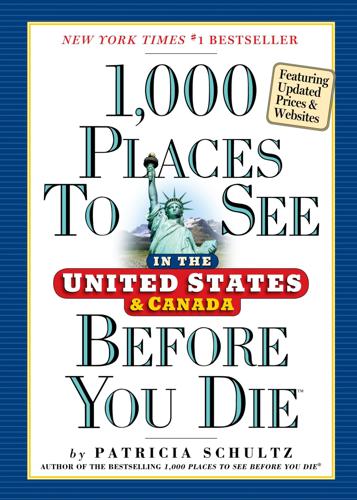
1,000 Places to See in the United States and Canada Before You Die, Updated Ed.
by
Patricia Schultz
Published 13 May 2007
(The peddler’s body and his trunk—the trunk is now at the Lily Dale Museum—were discovered in the house’s cellar wall in 1904.) The Fox sisters became famous, starting a movement that was prominent well into the 1920s, gaining followers among men of science including evolutionary biologist Alfred Russel Wallace and physician and author Sir Arthur Conan Doyle. The movement lost popularity in the twenties because of a rash of charlatans seeking to cash in (today’s mediums go through a rigorous testing process by Lily Dale’s board of directors). Lily Dale is at its busiest over ten weeks in the summer, when more than 20,000 people converge for an intense schedule of over 100 talks and workshops, which cover everything from how to channel the voices of spirits to finding your own spirit guide.

Artificial Intelligence: A Modern Approach
by
Stuart Russell
and
Peter Norvig
Published 14 Jul 2019
It can be shown that if the average fitness of the instances of a schema is above the mean, then the number of instances of the schema will grow over time. Evolution and Search The theory of evolution was developed by Charles Darwin in On the Origin of Species by Means of Natural Selection (1859) and independently by Alfred Russel Wallace (1858). The central idea is simple: variations occur in reproduction and will be preserved in successive generations approximately in proportion to their effect on reproductive fitness. Darwin’s theory was developed with no knowledge of how the traits of organisms can be inherited and modified.